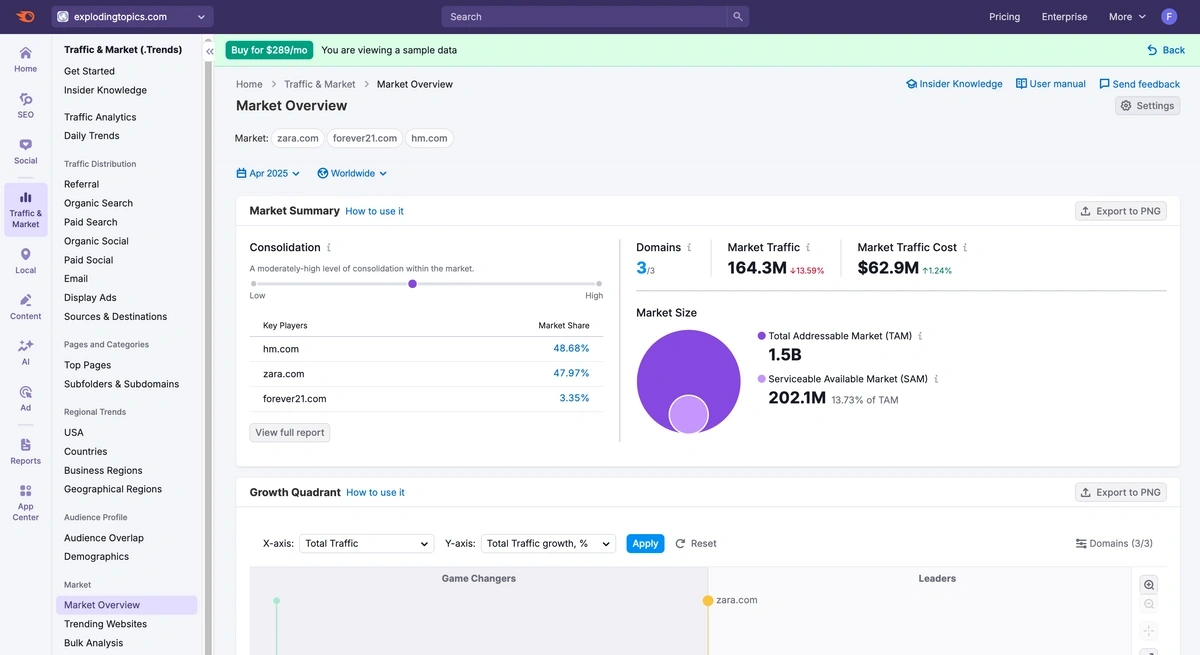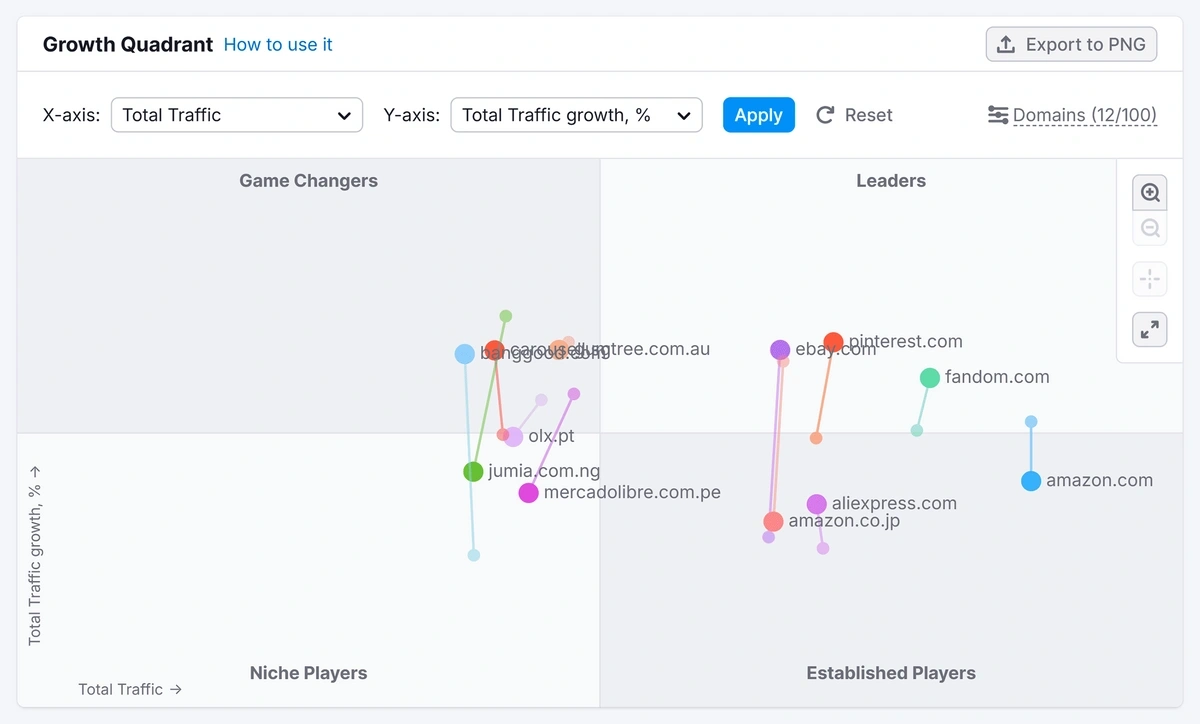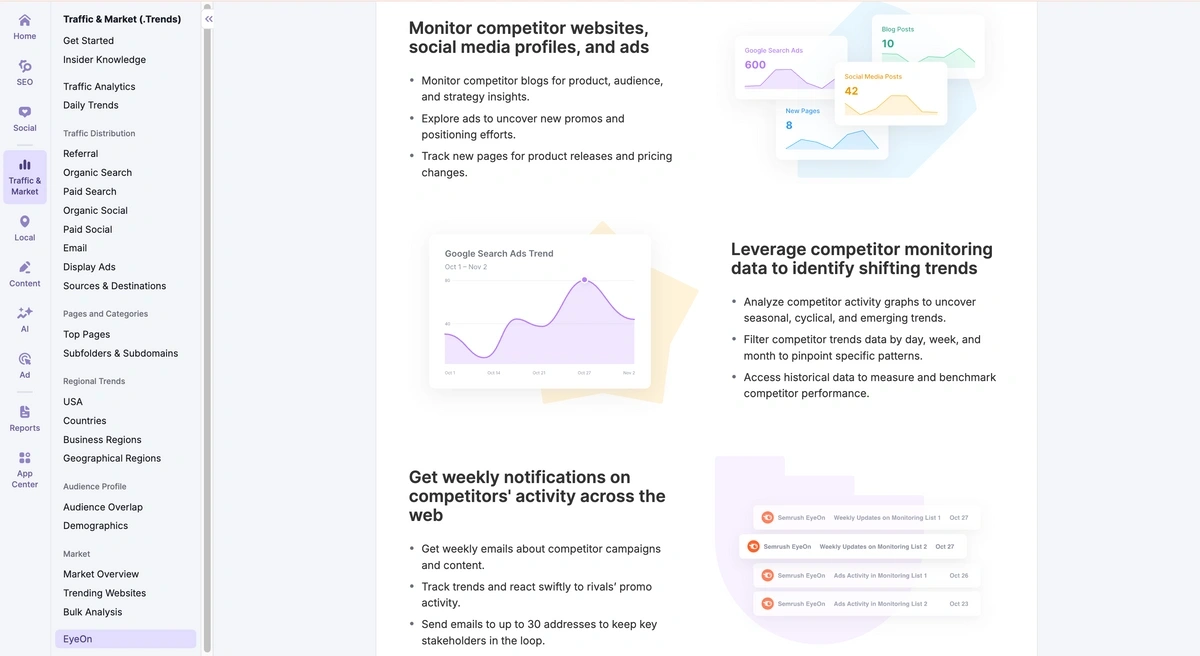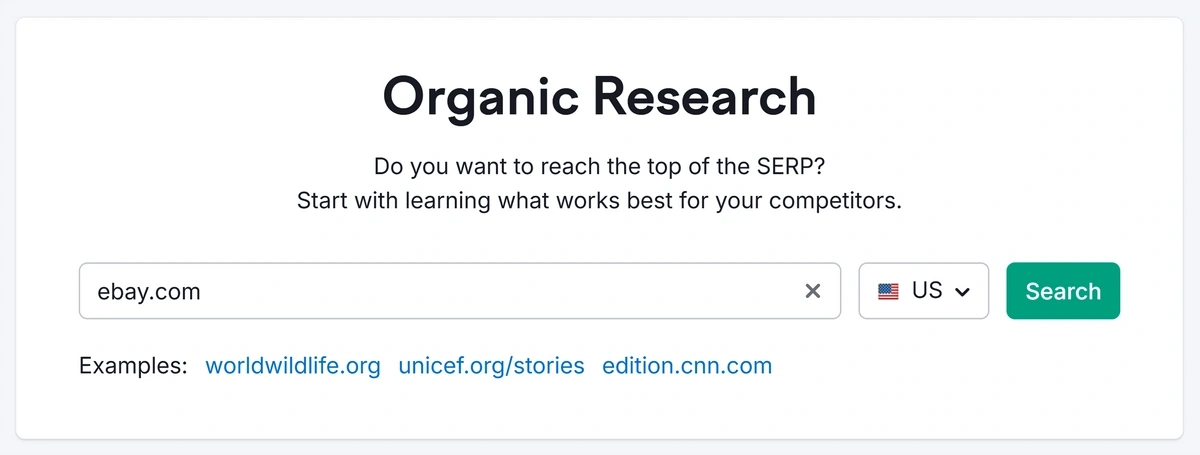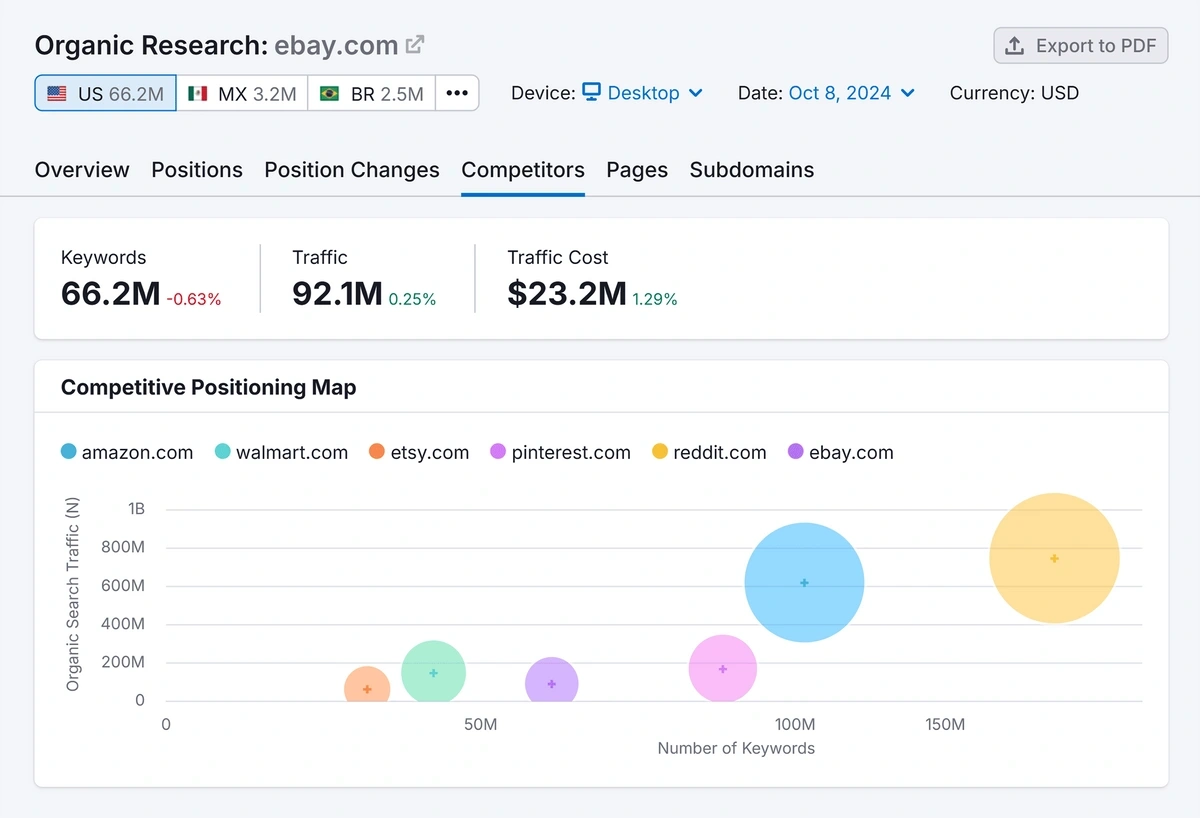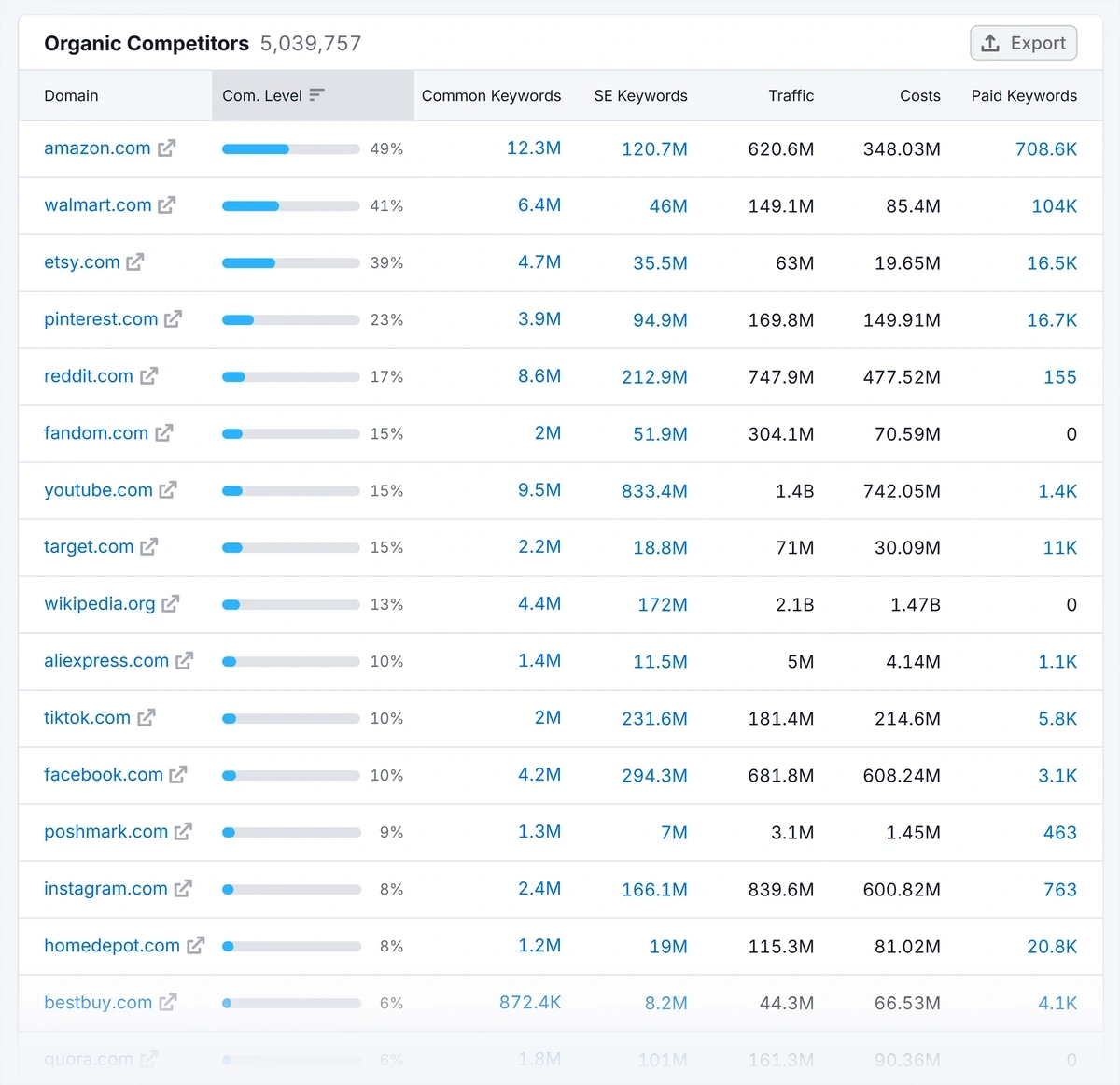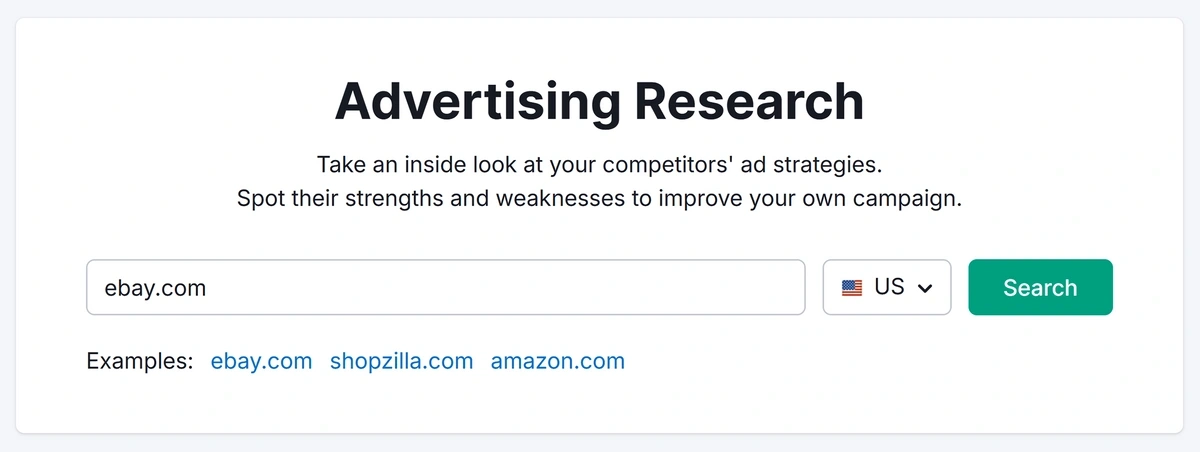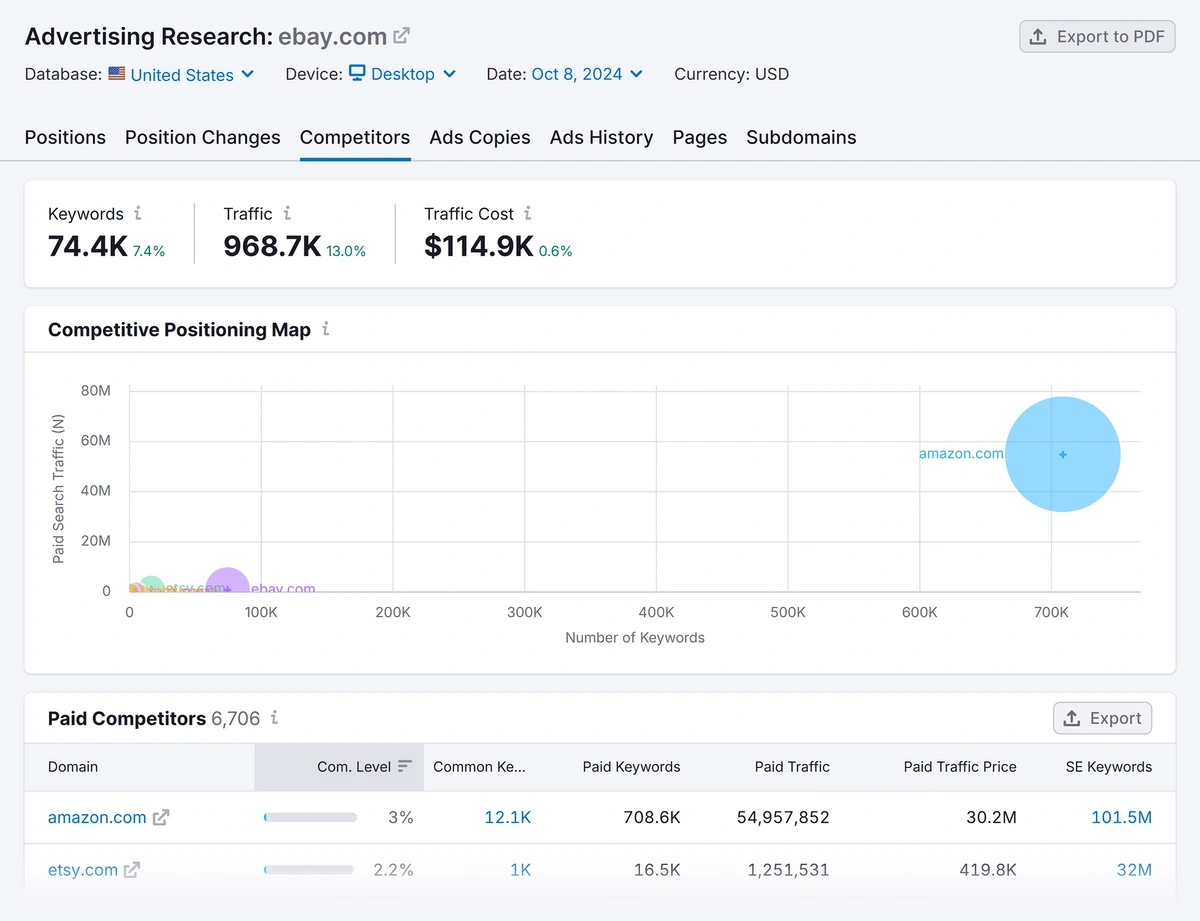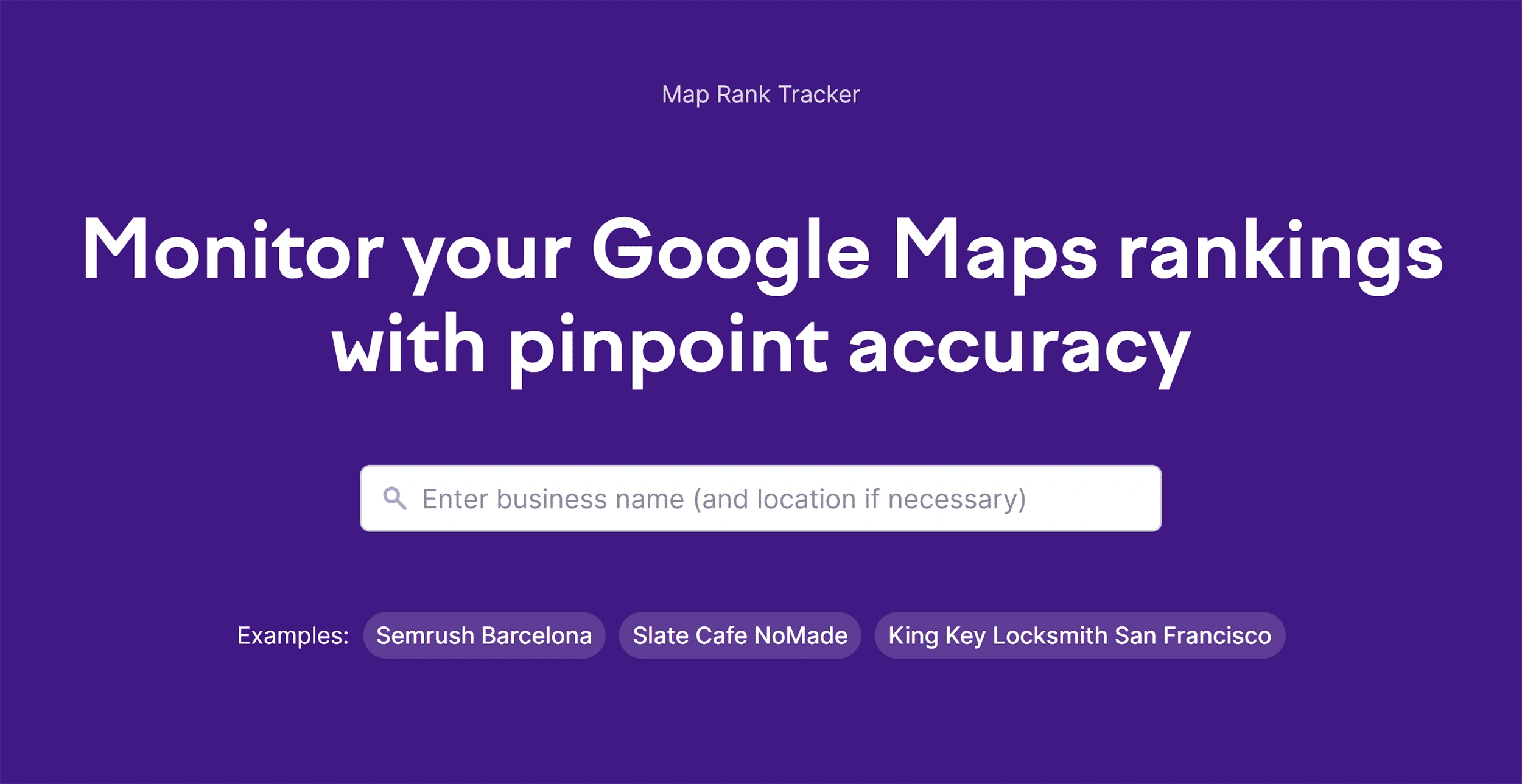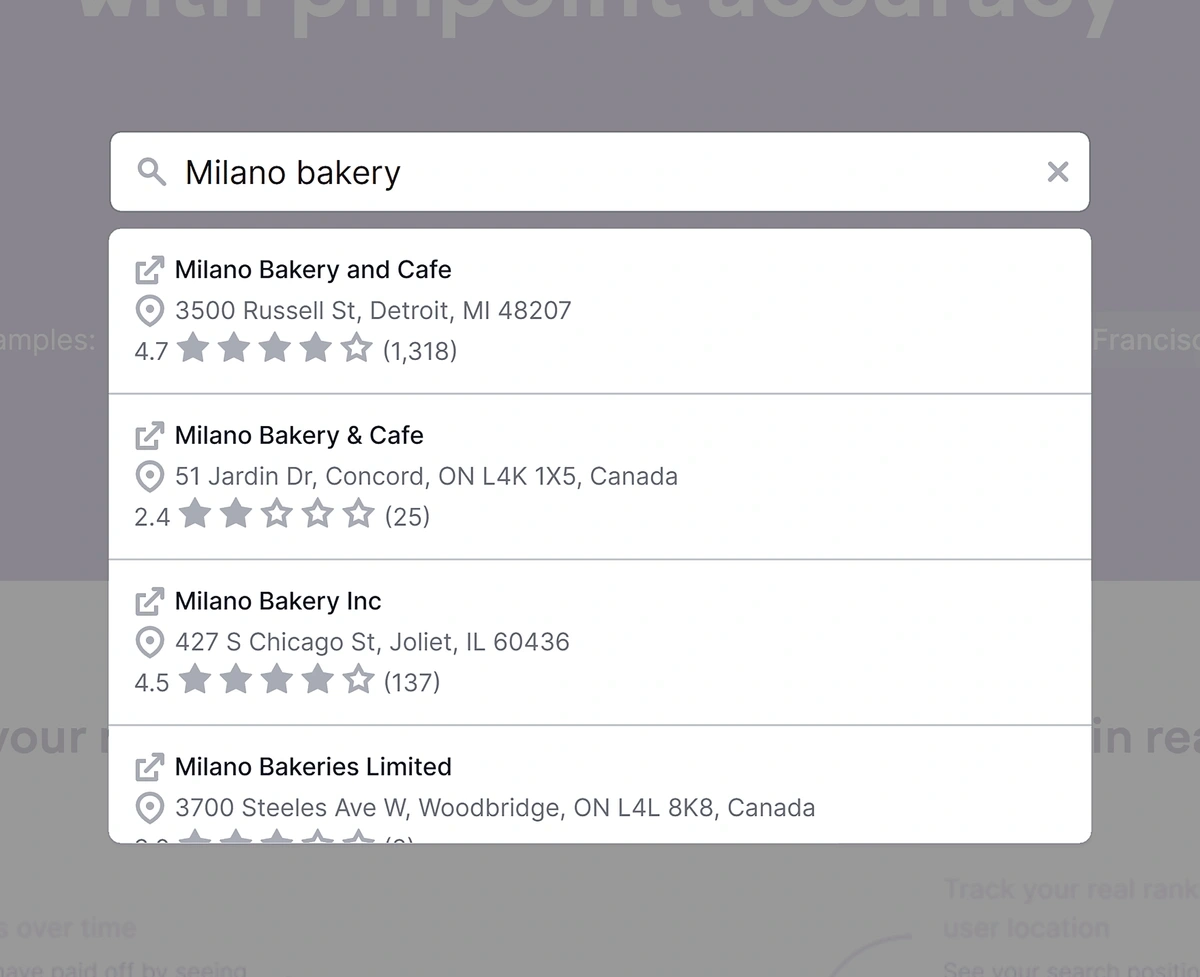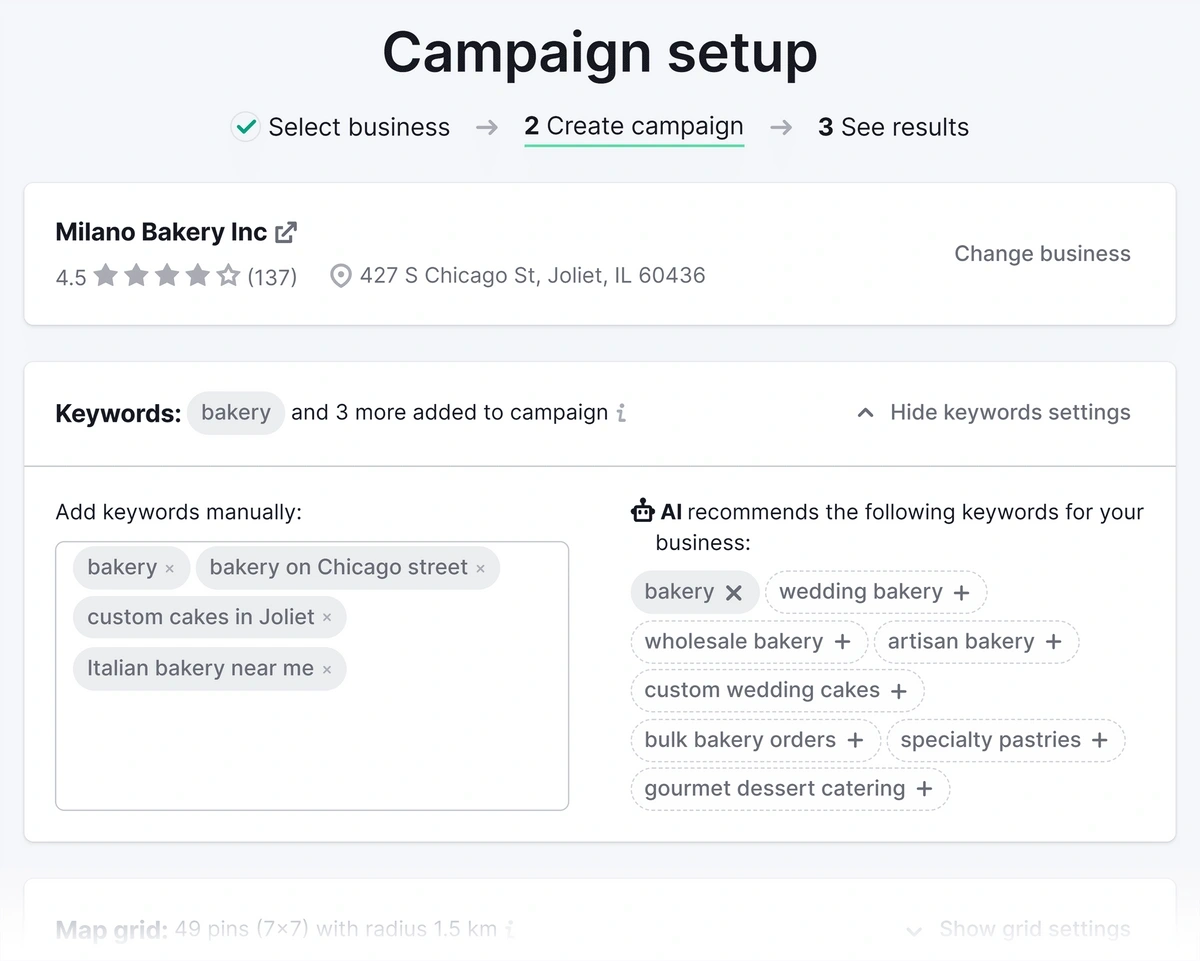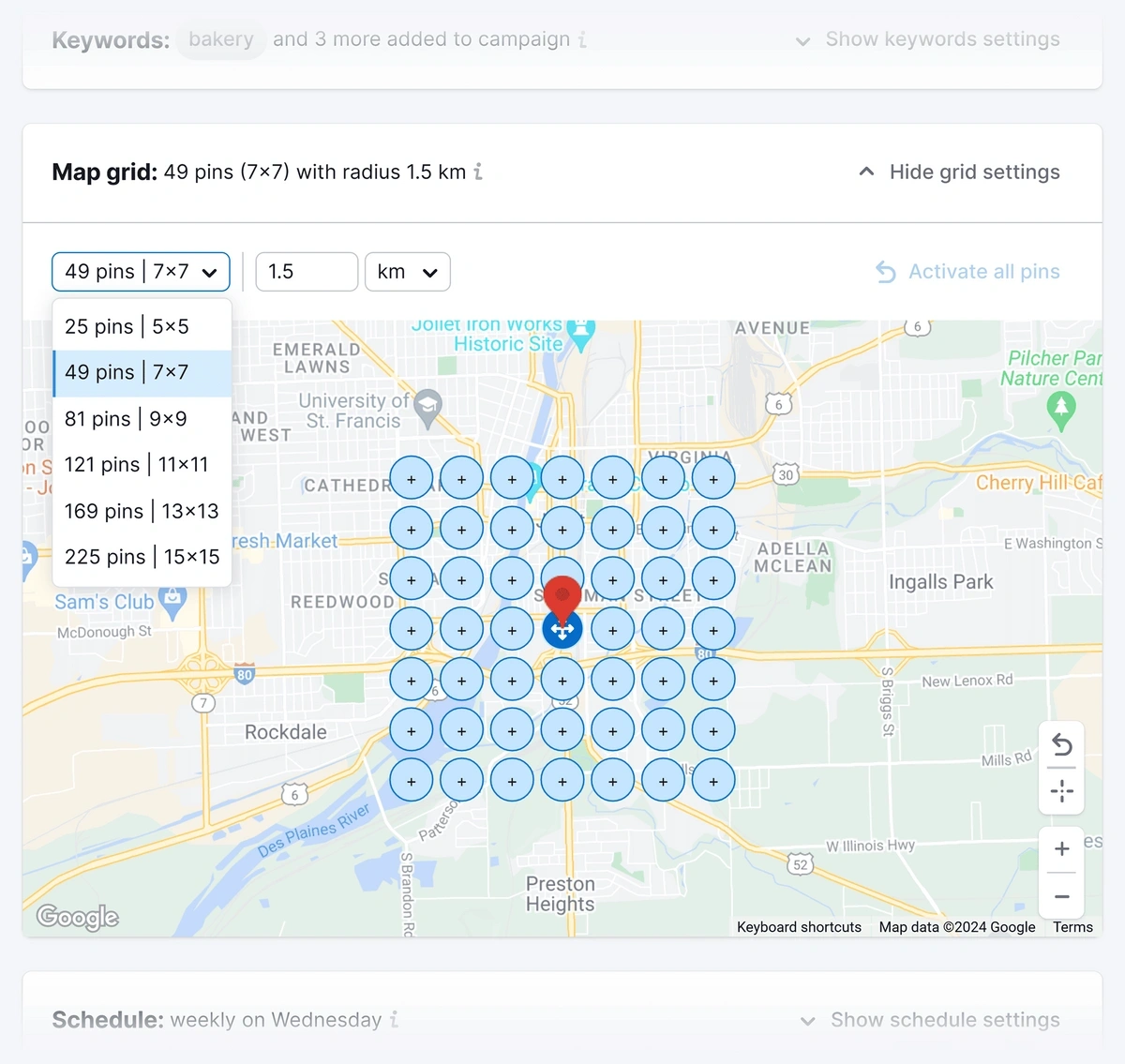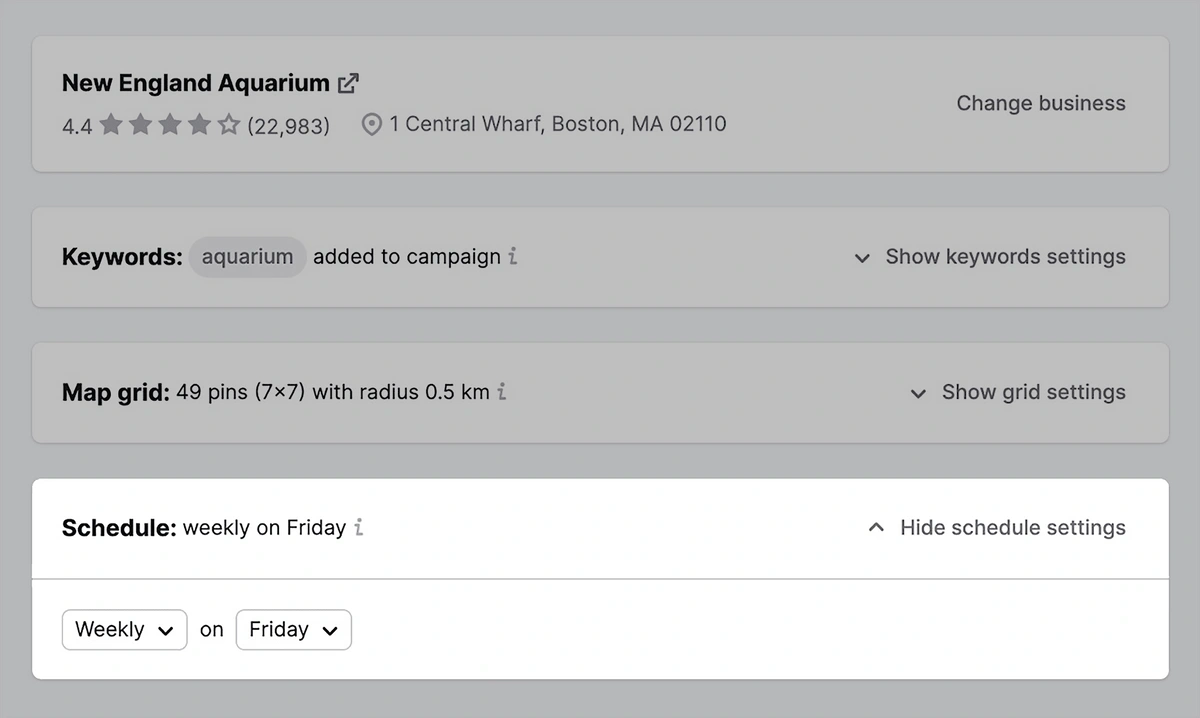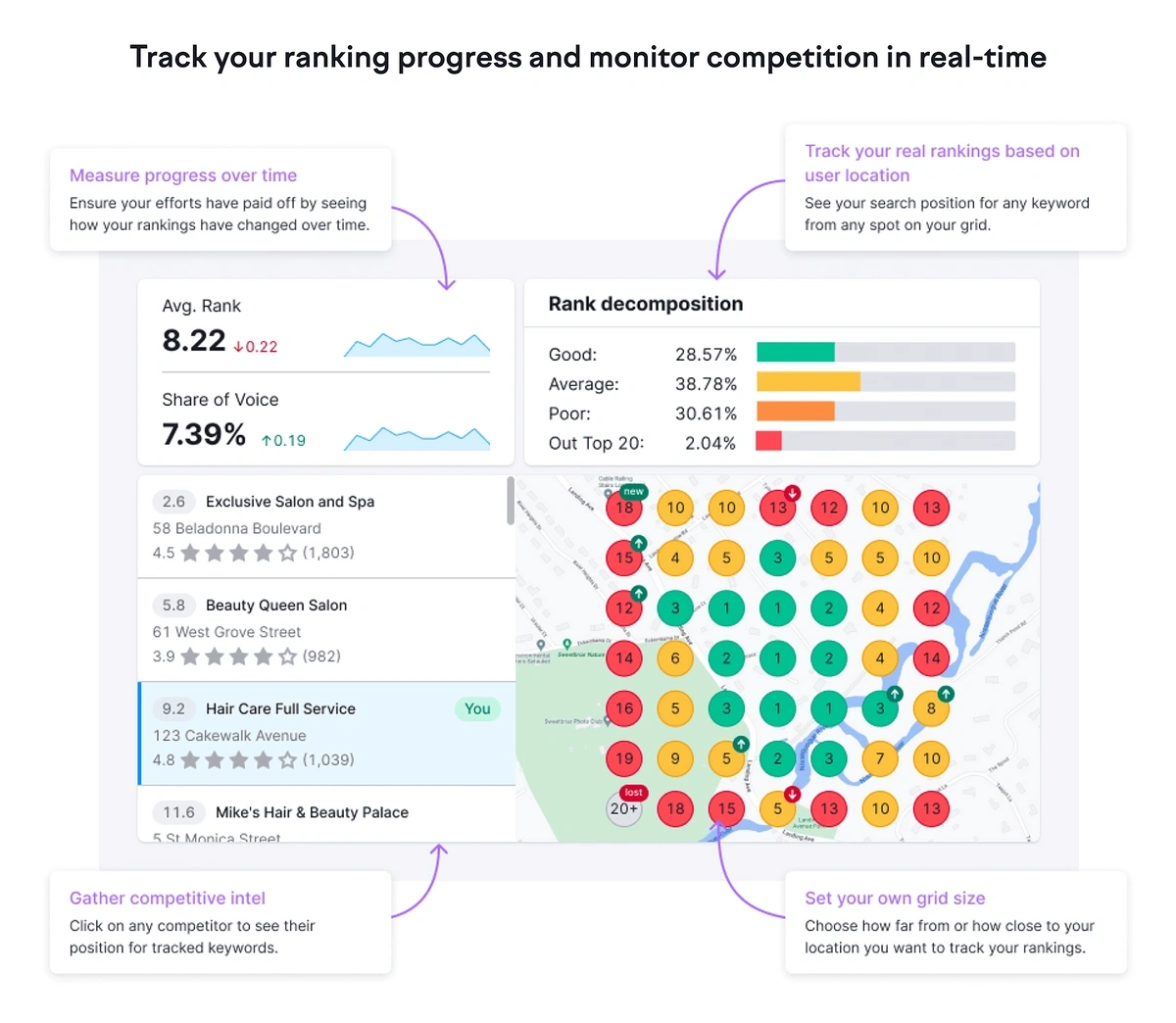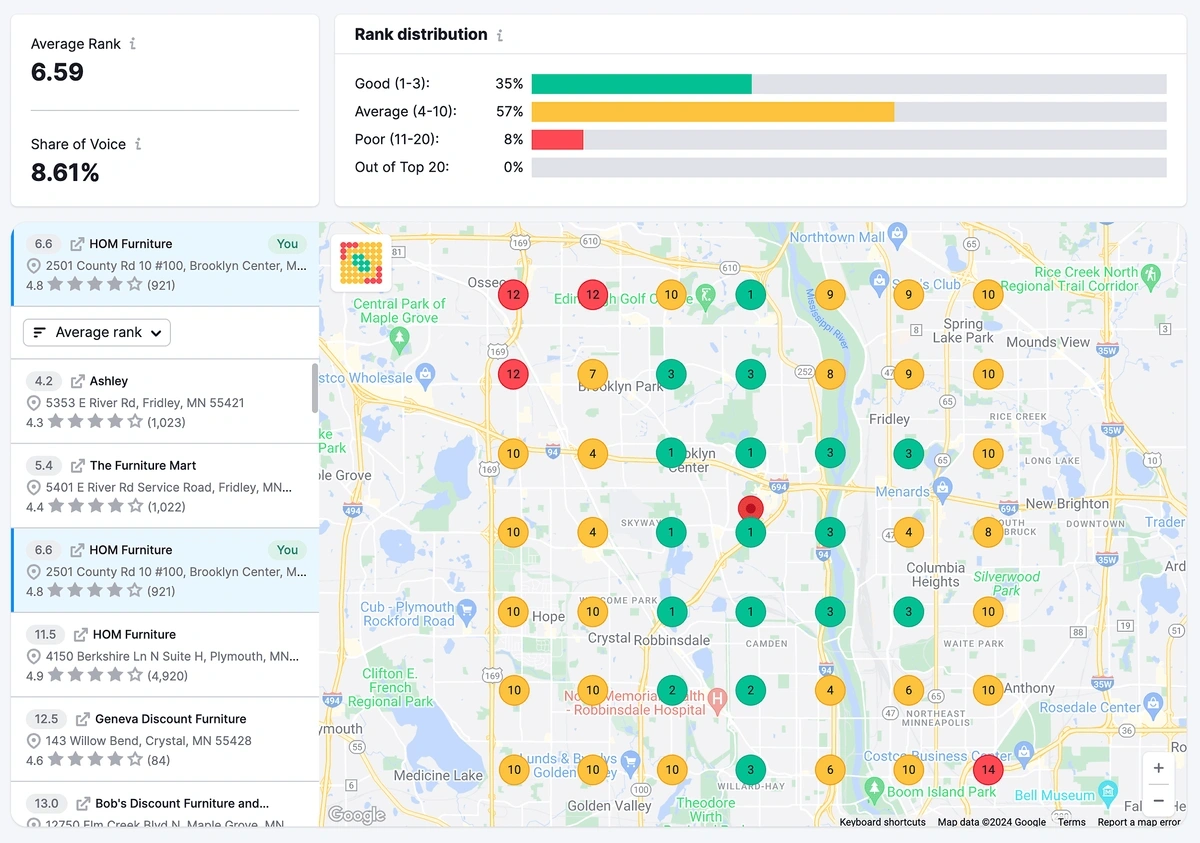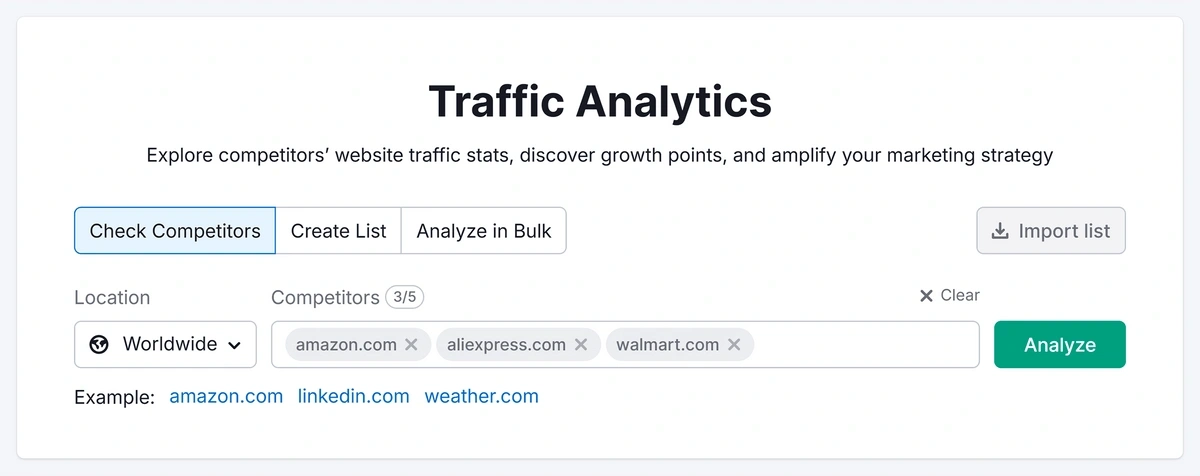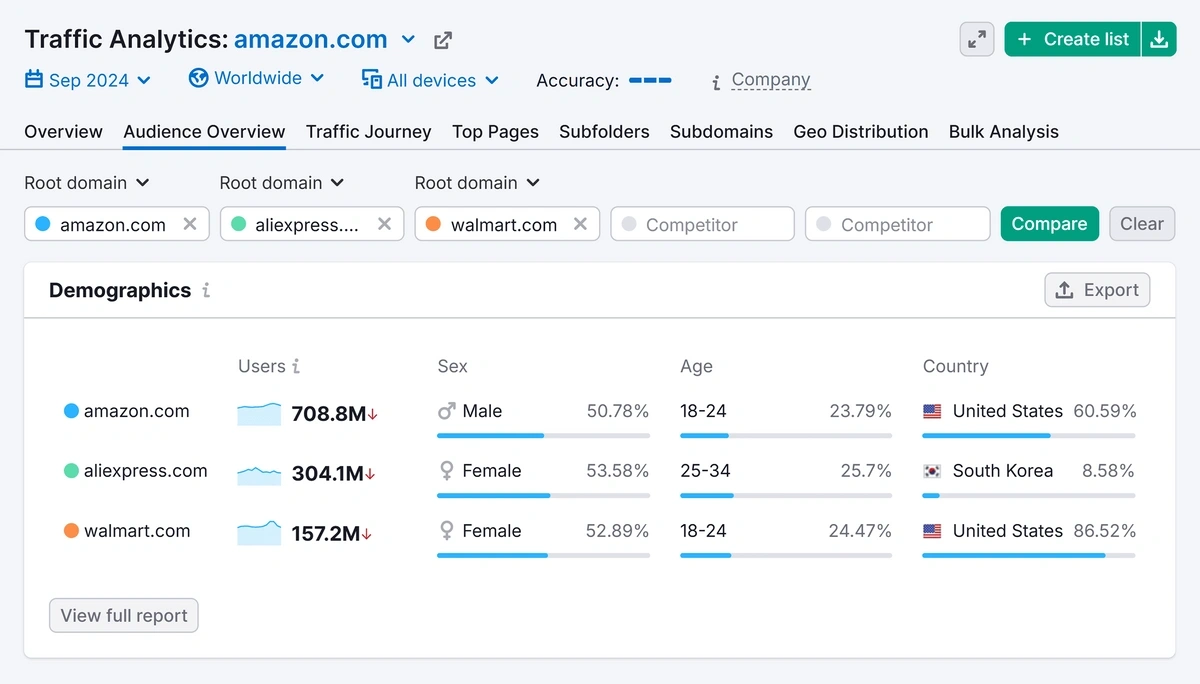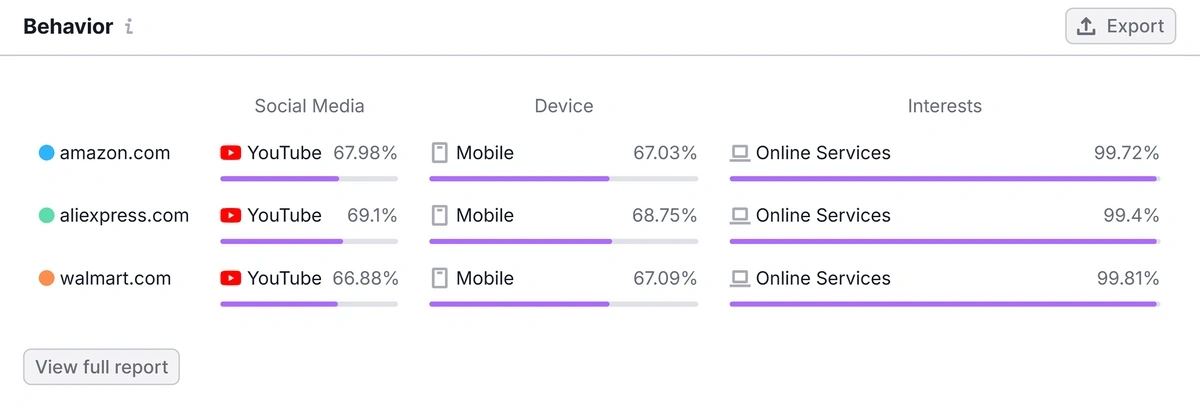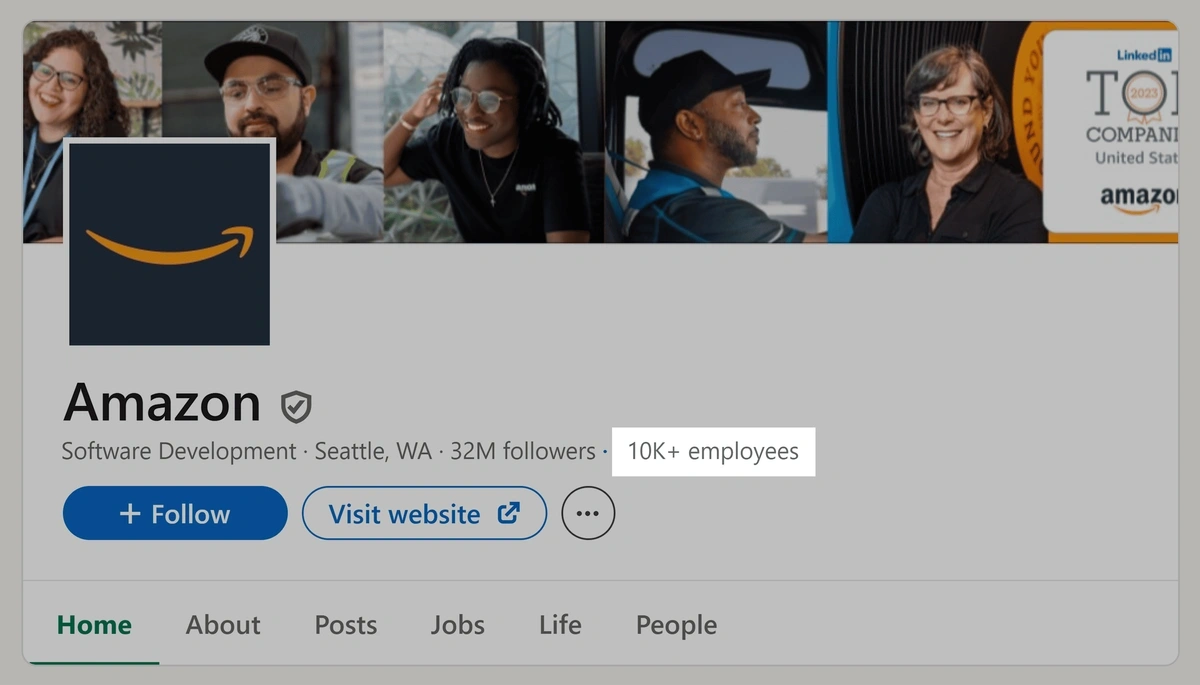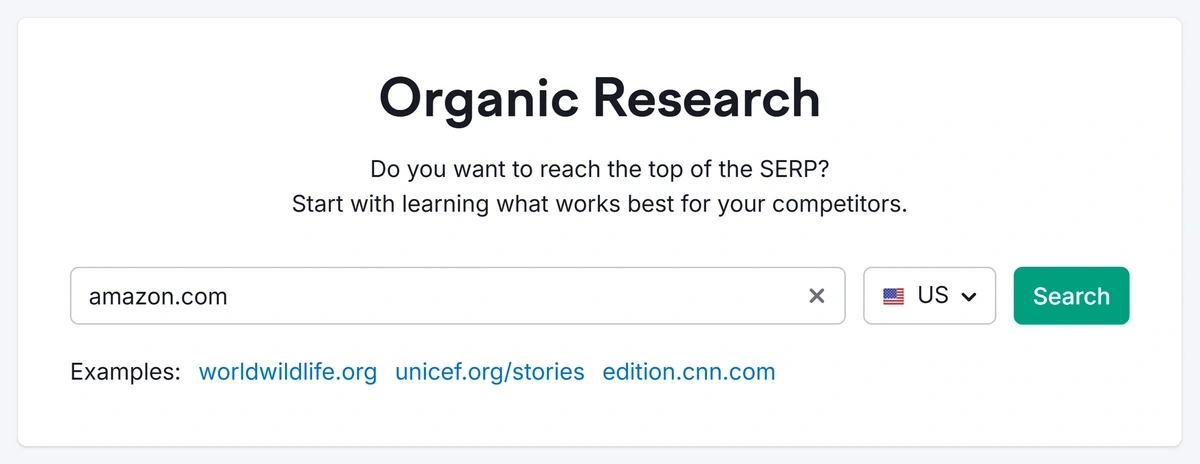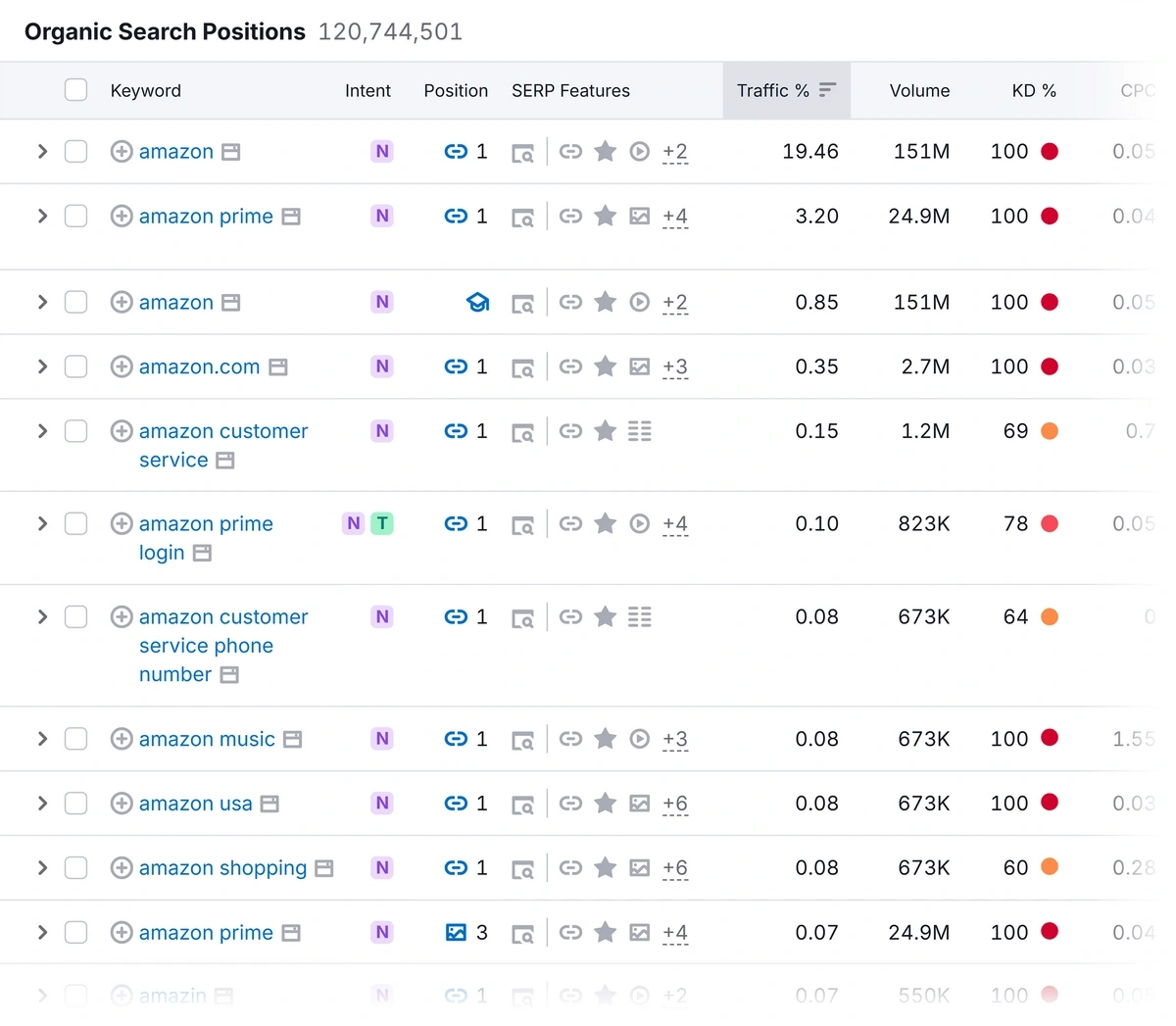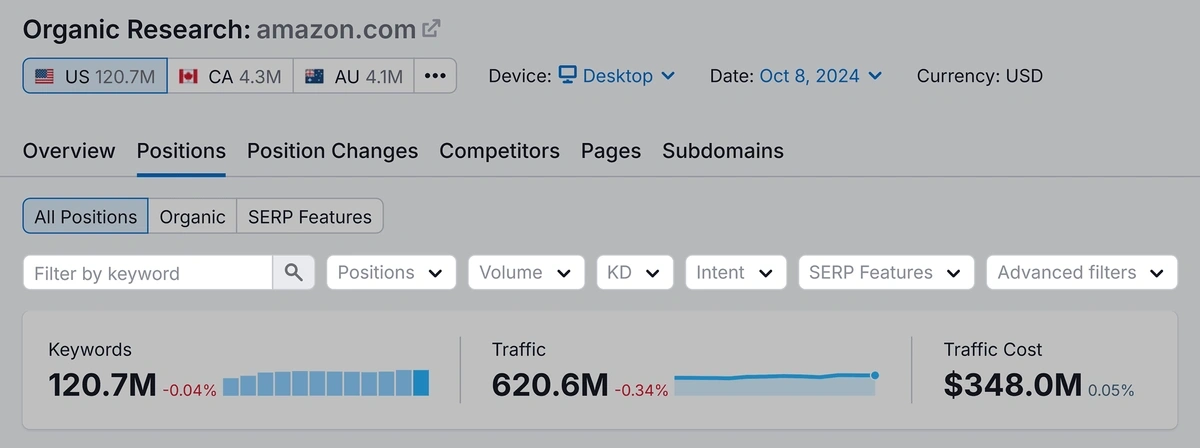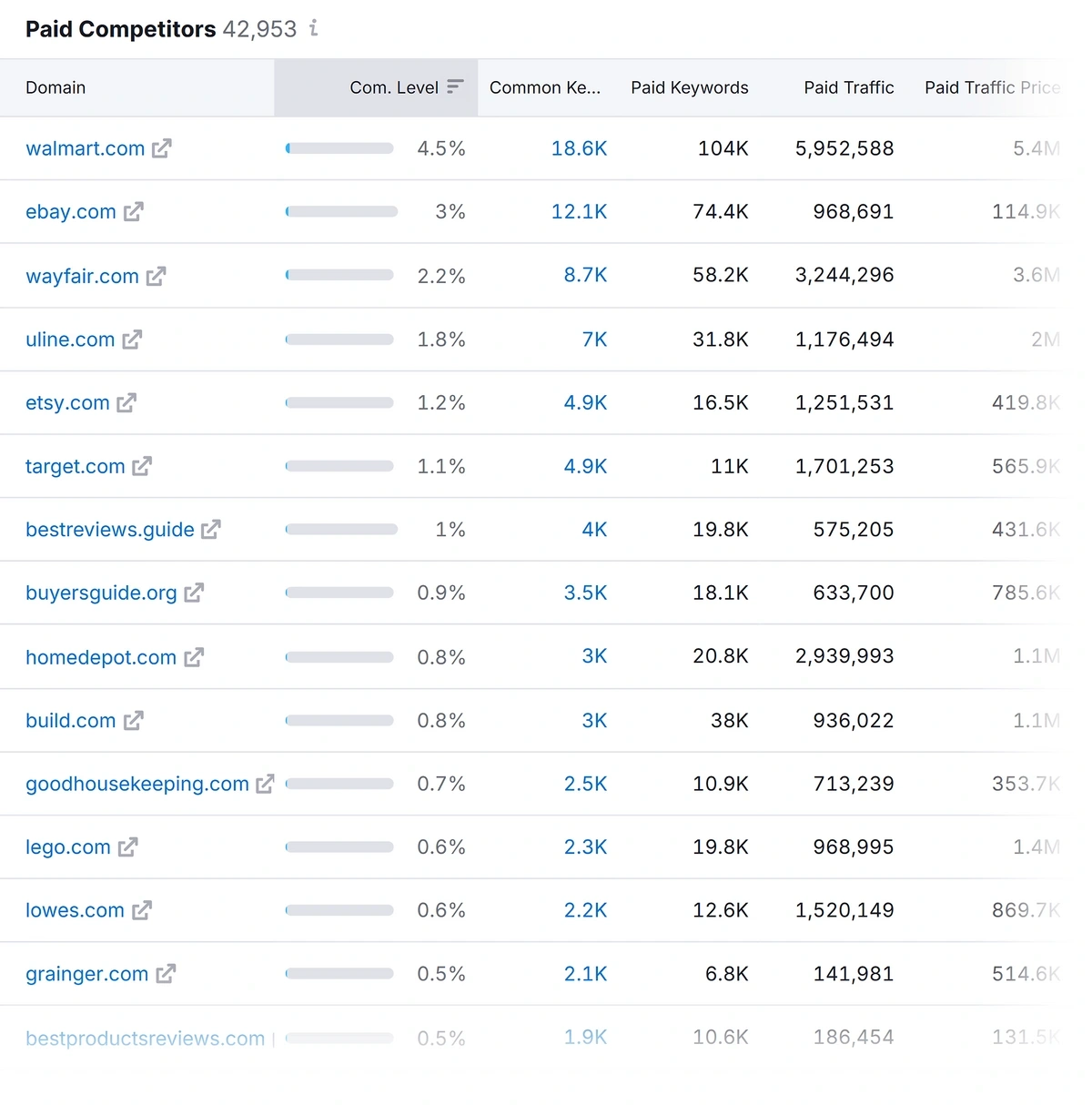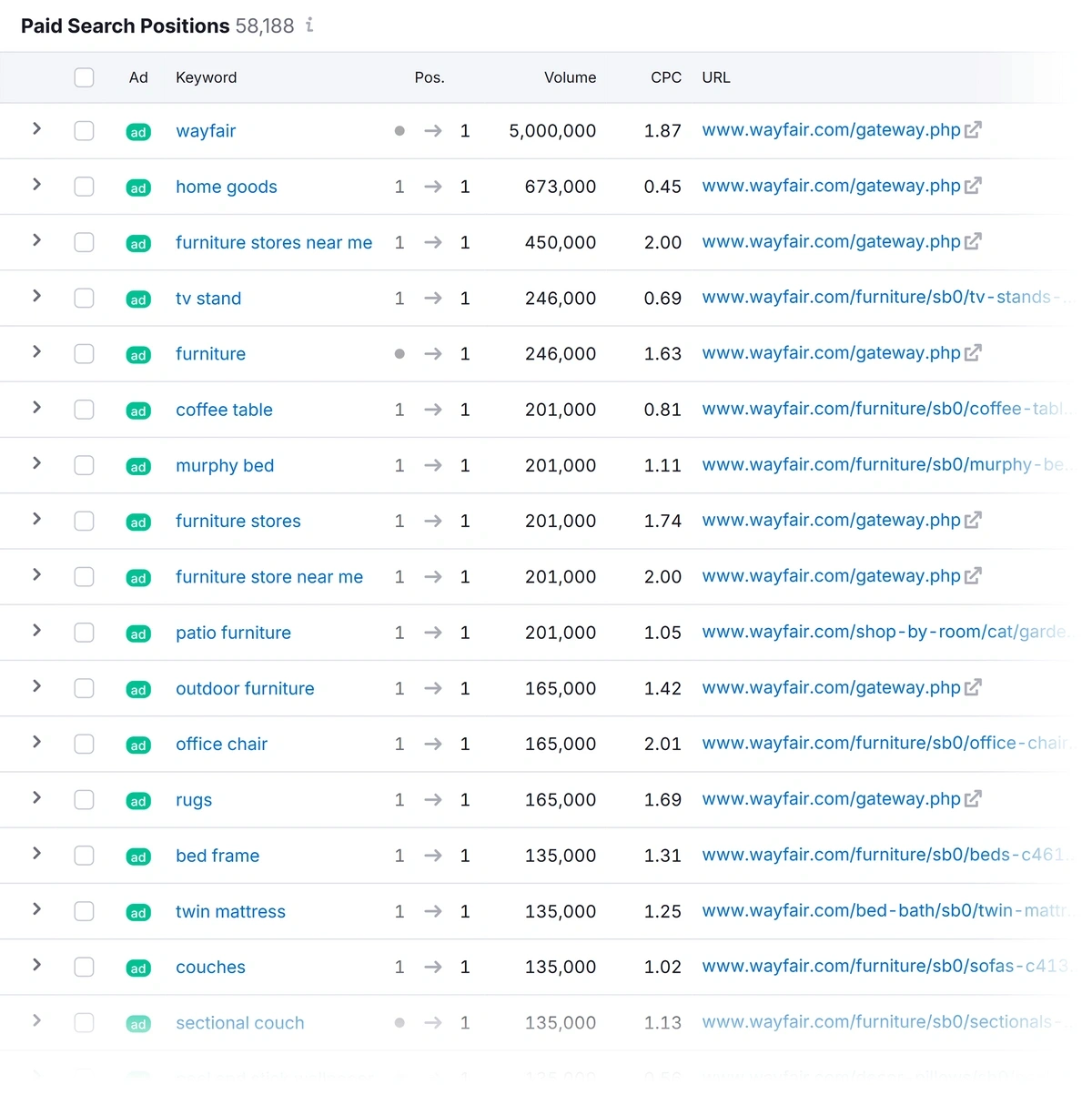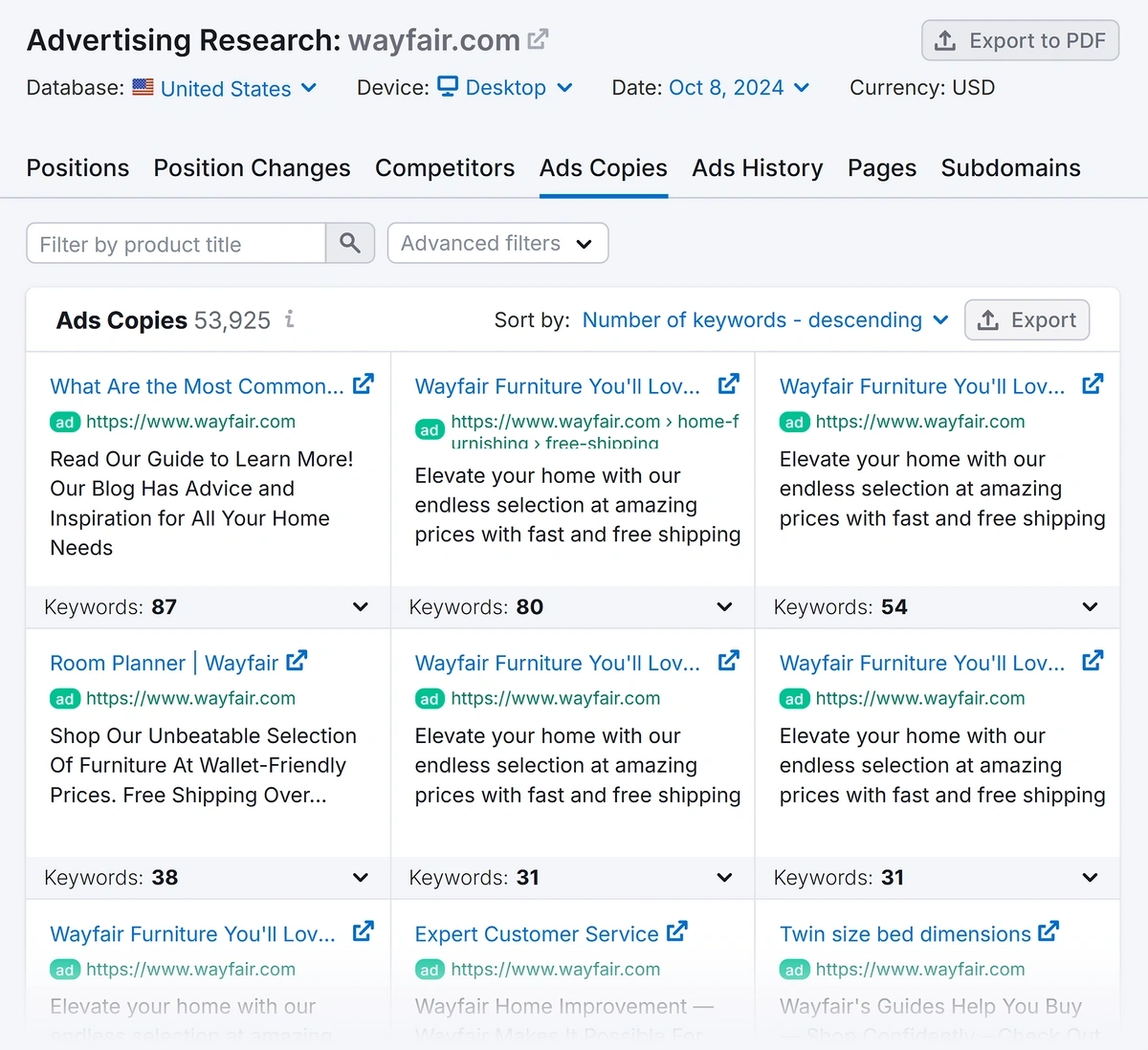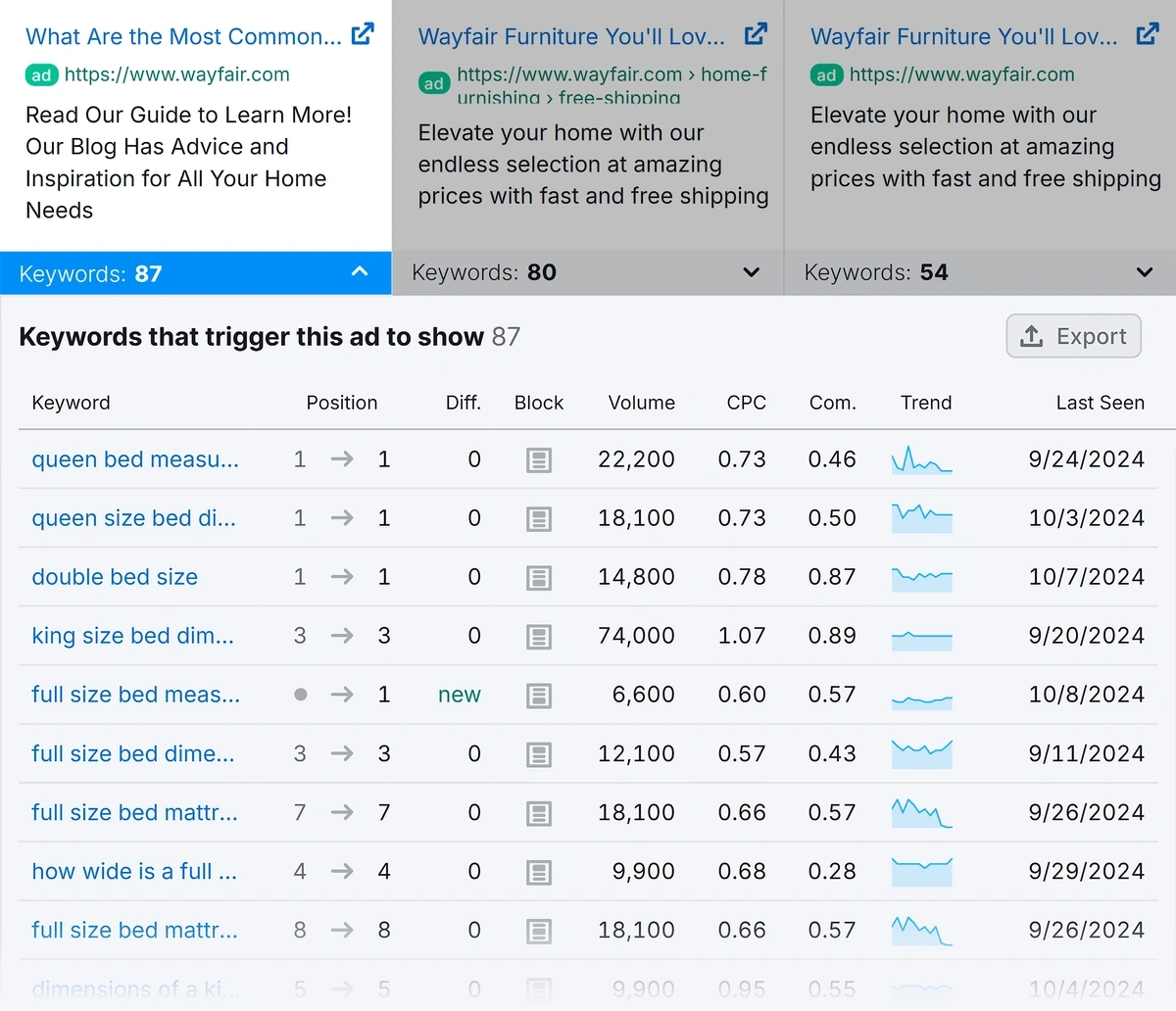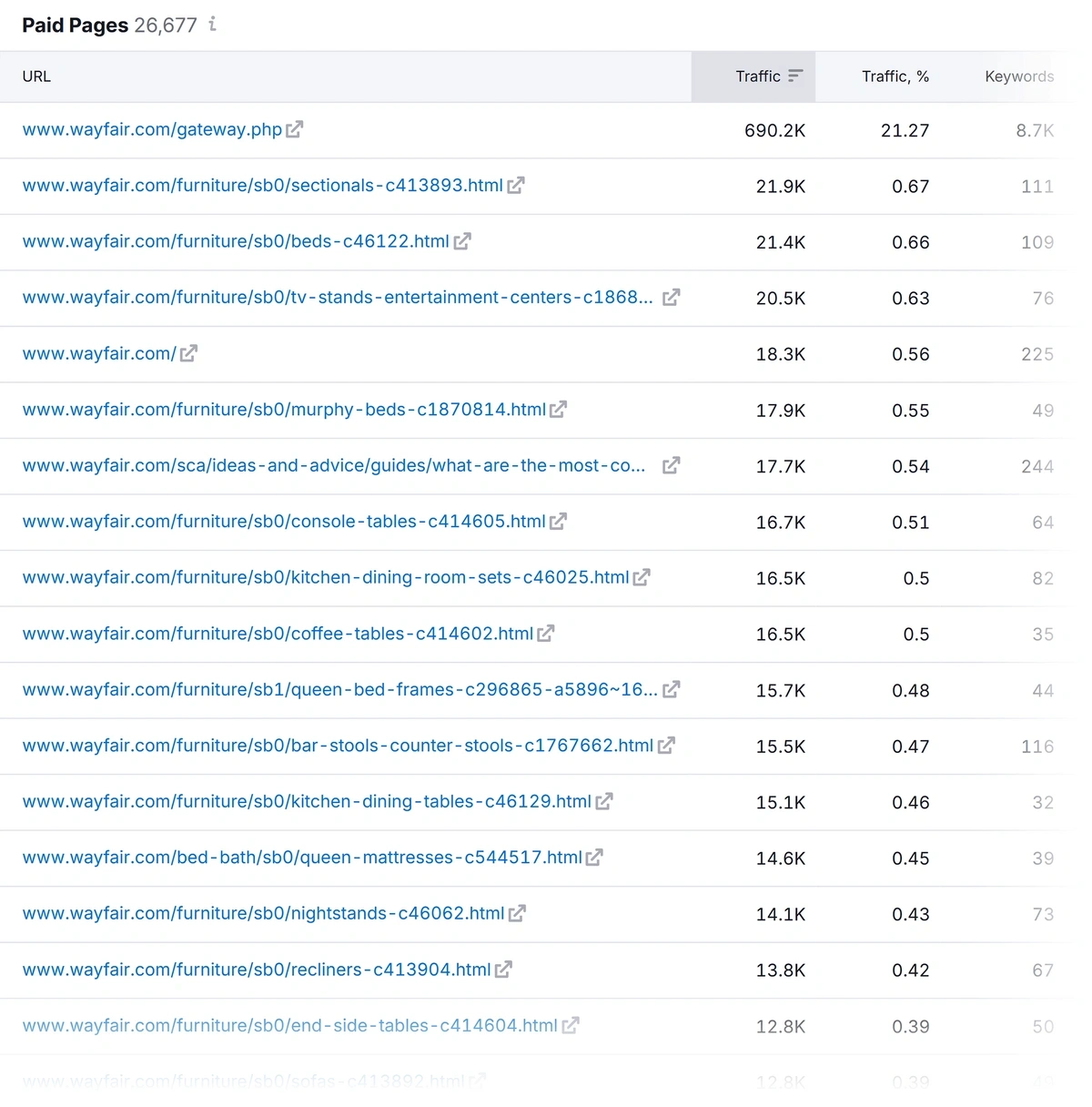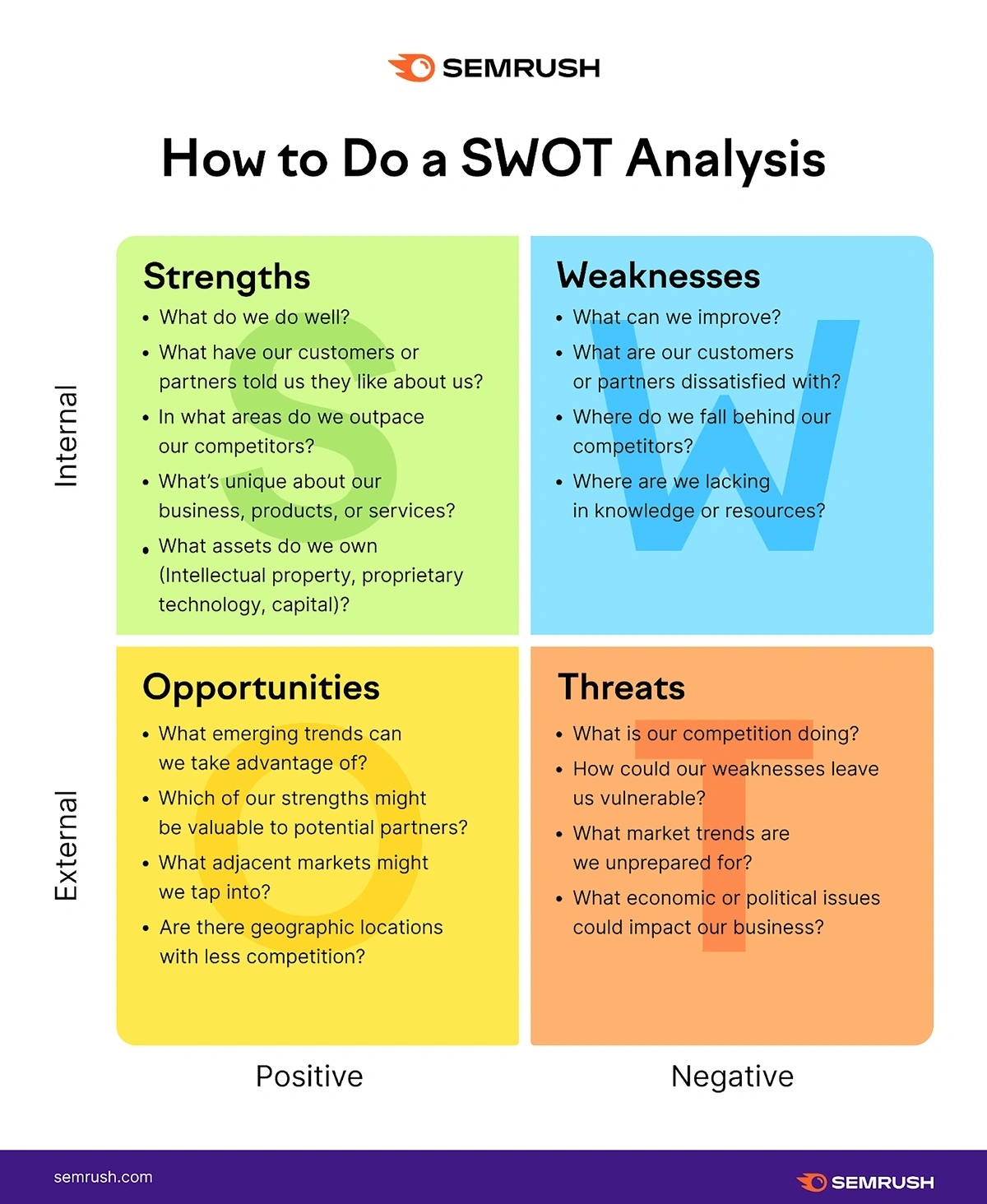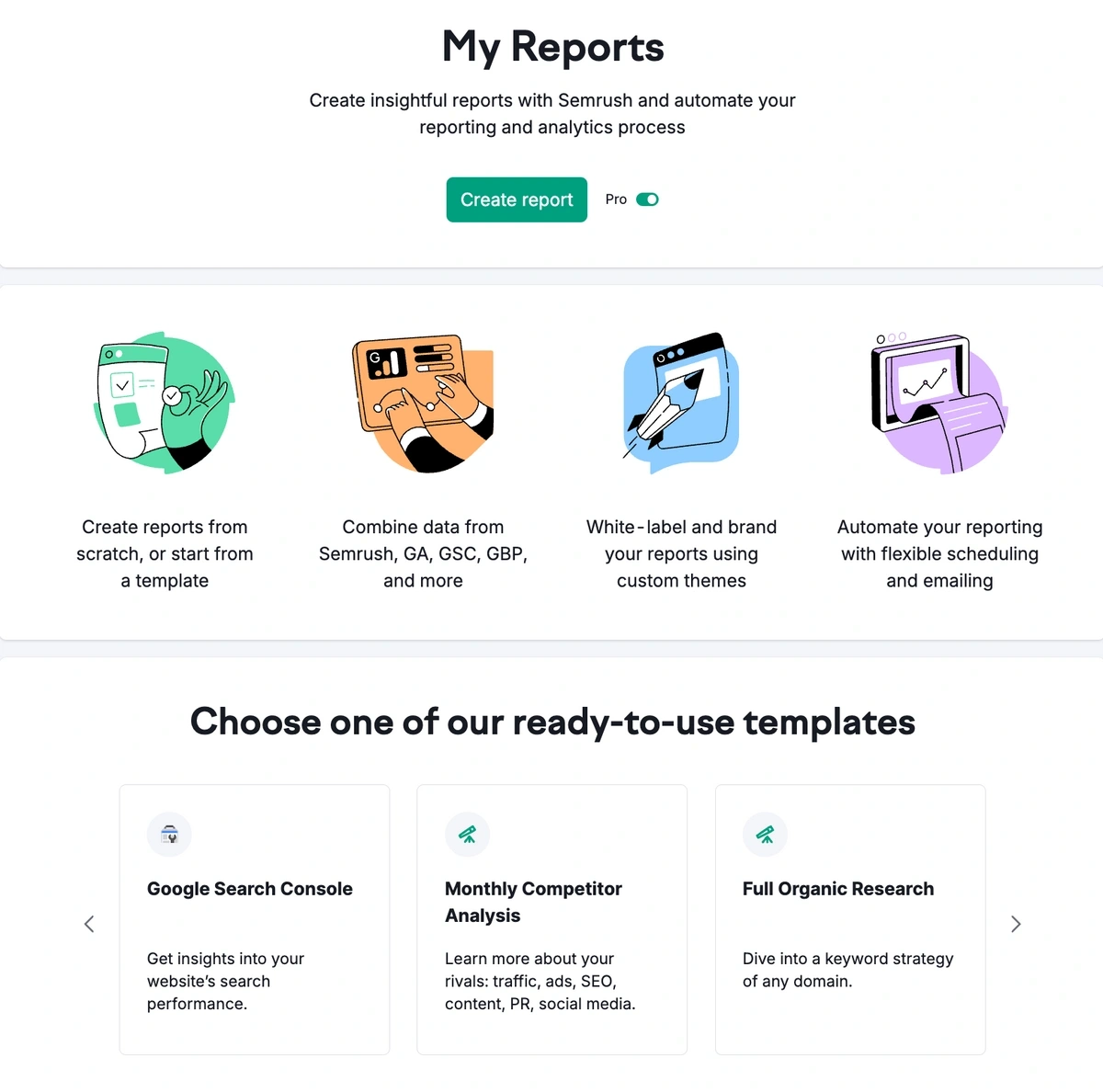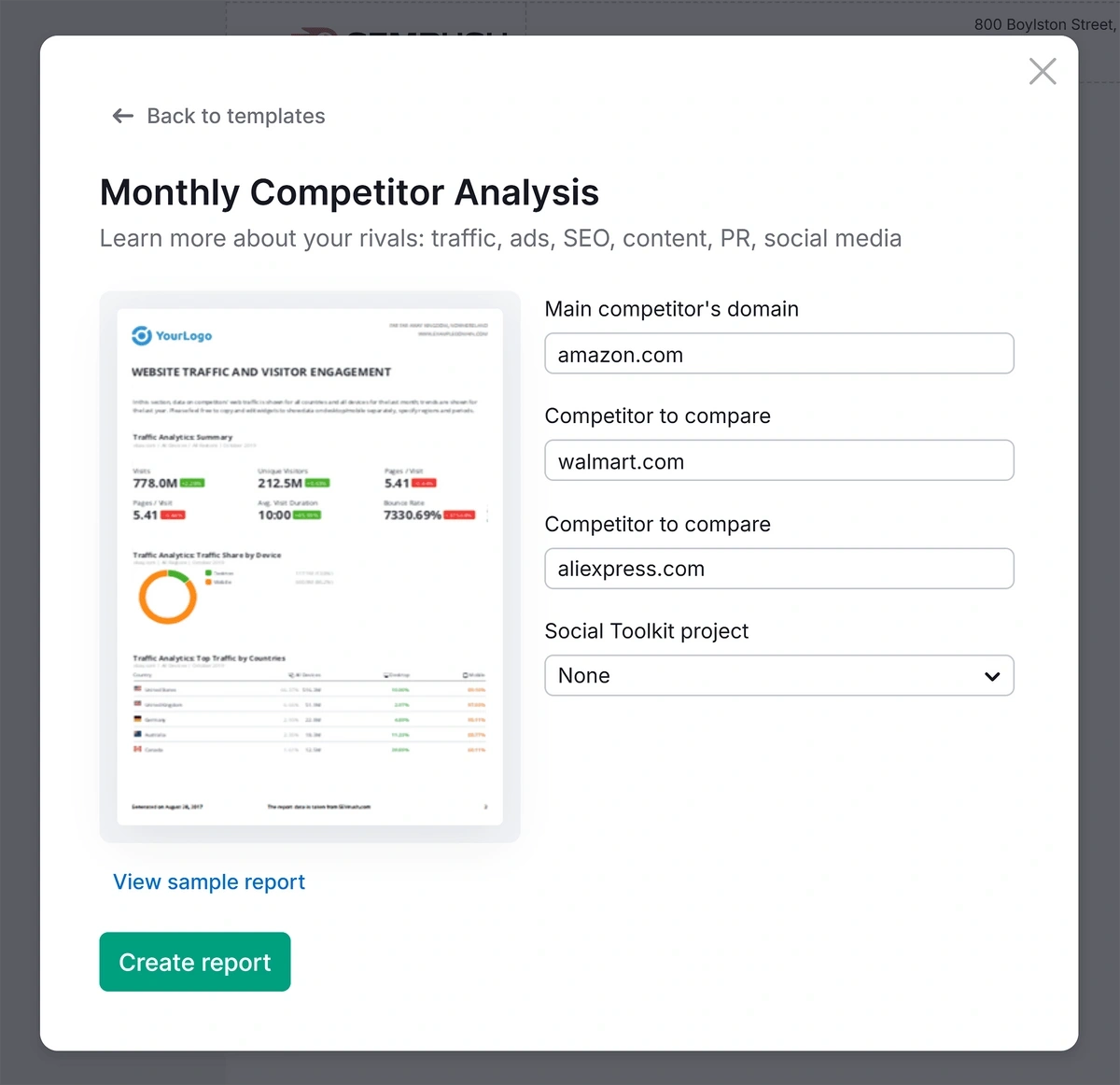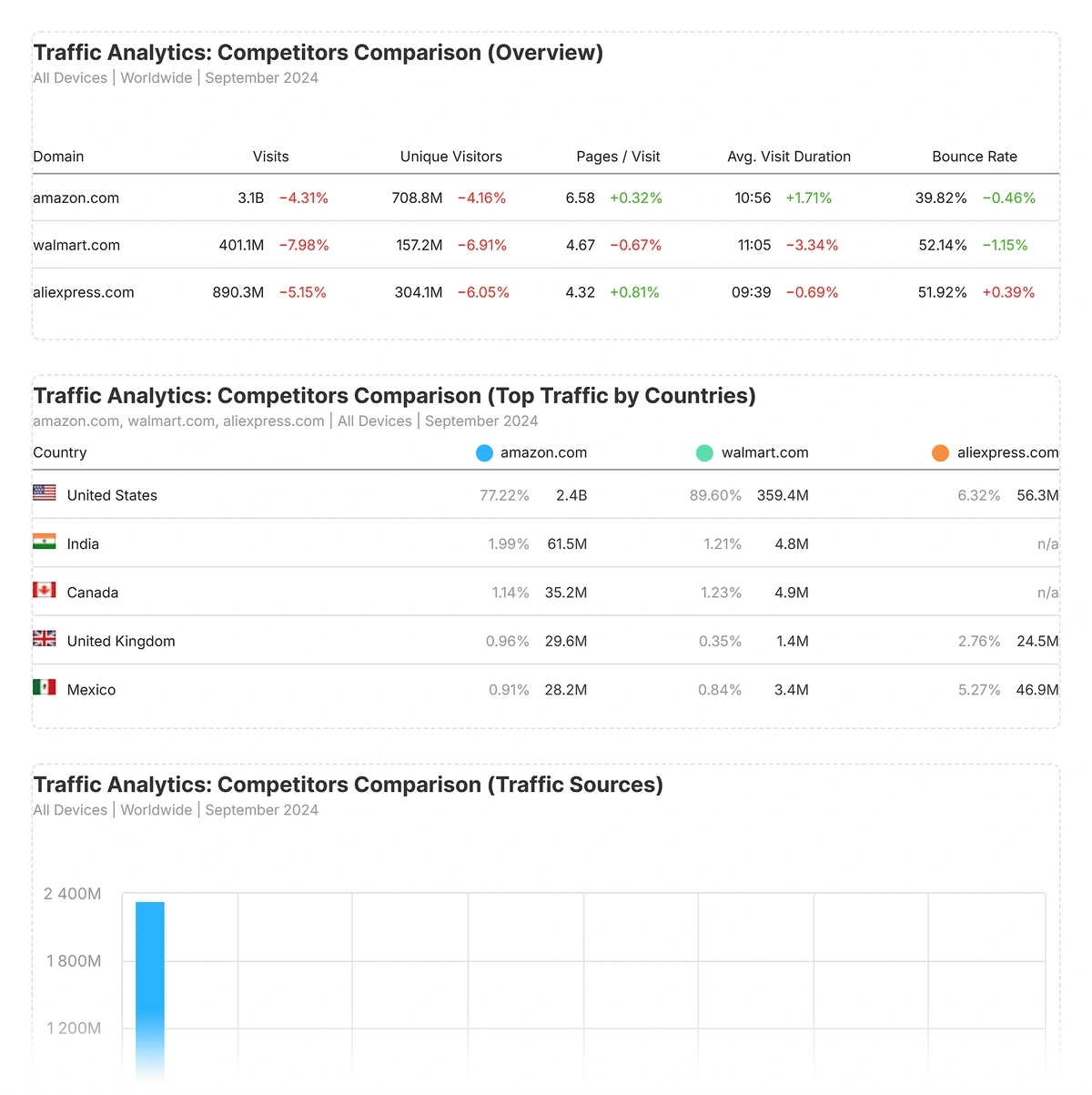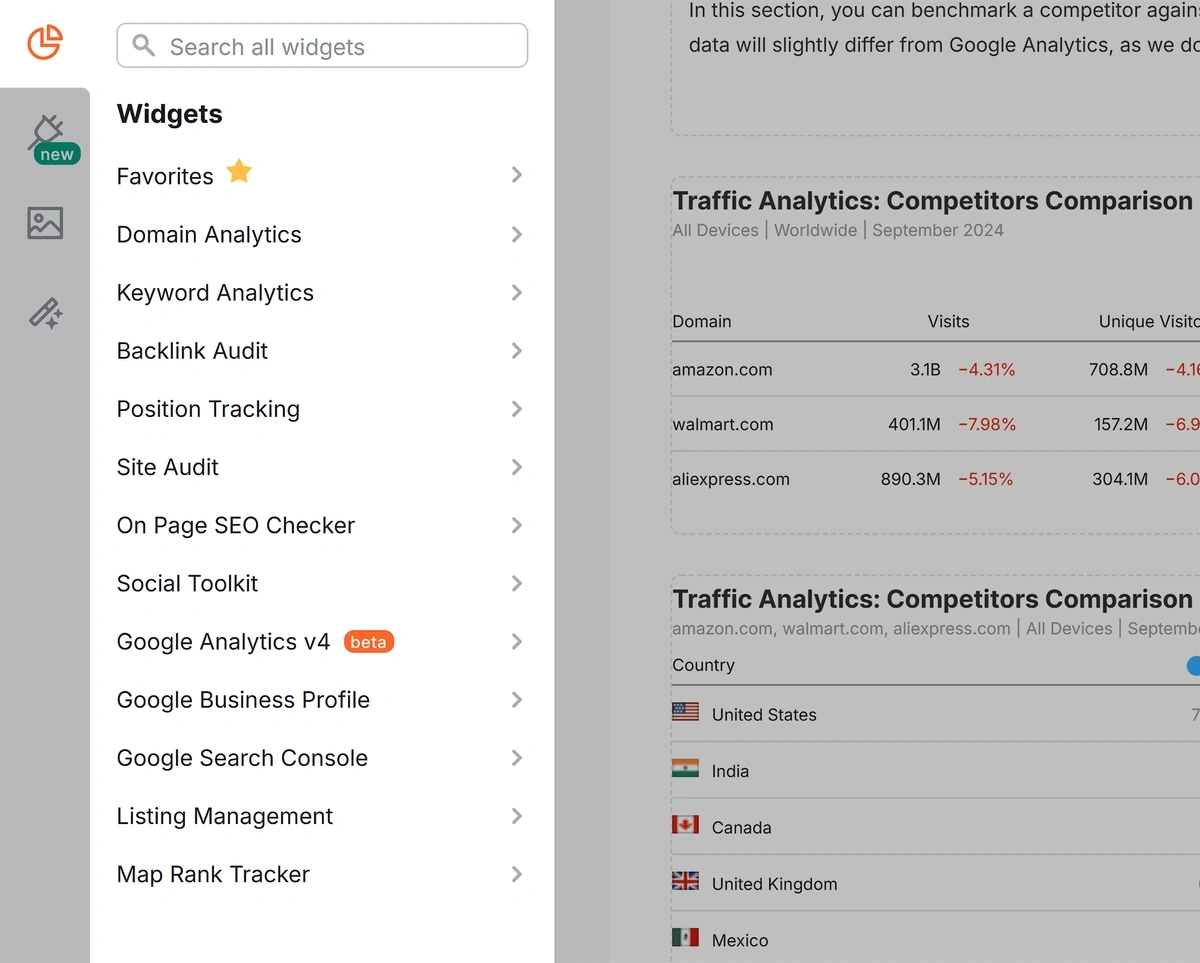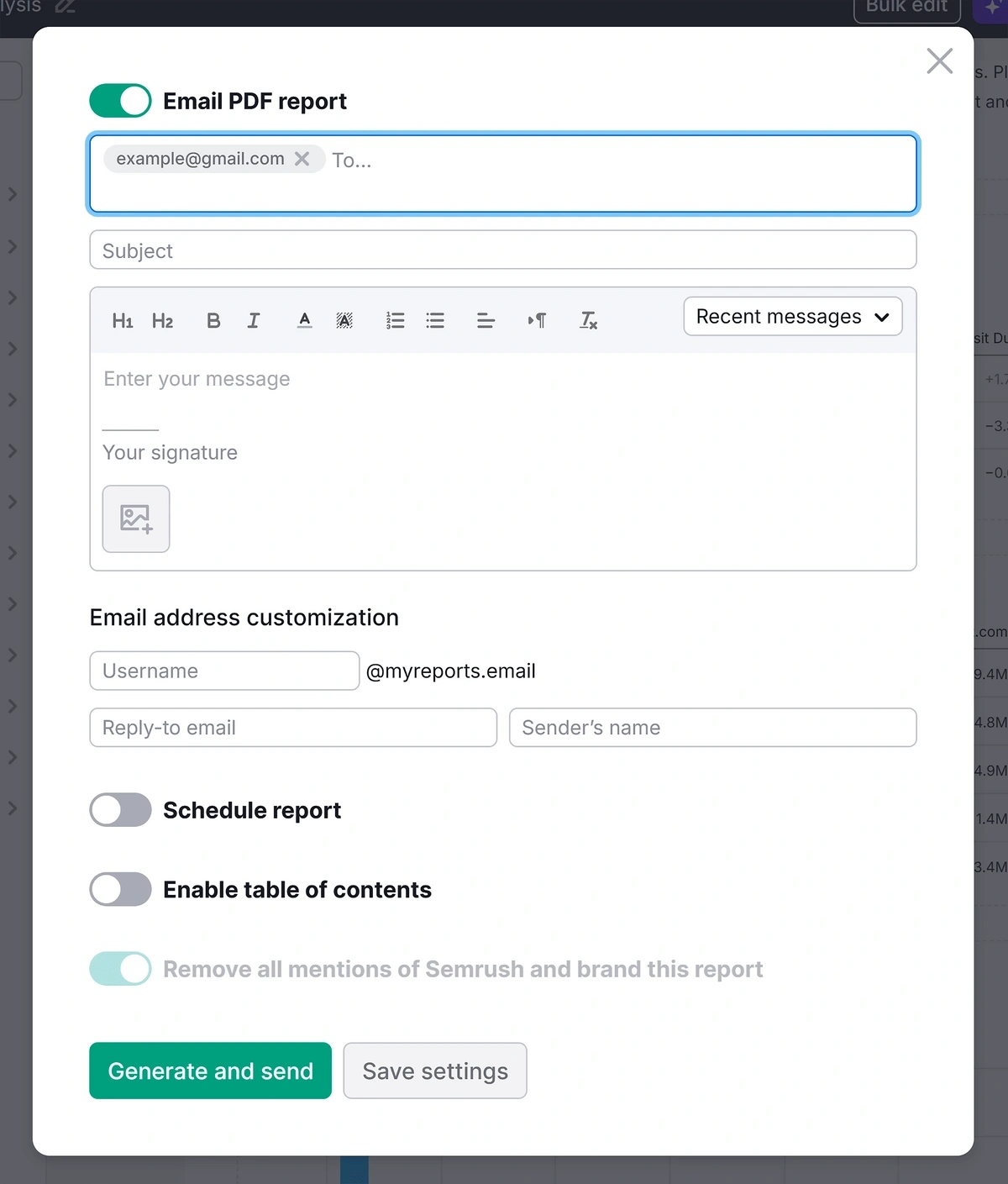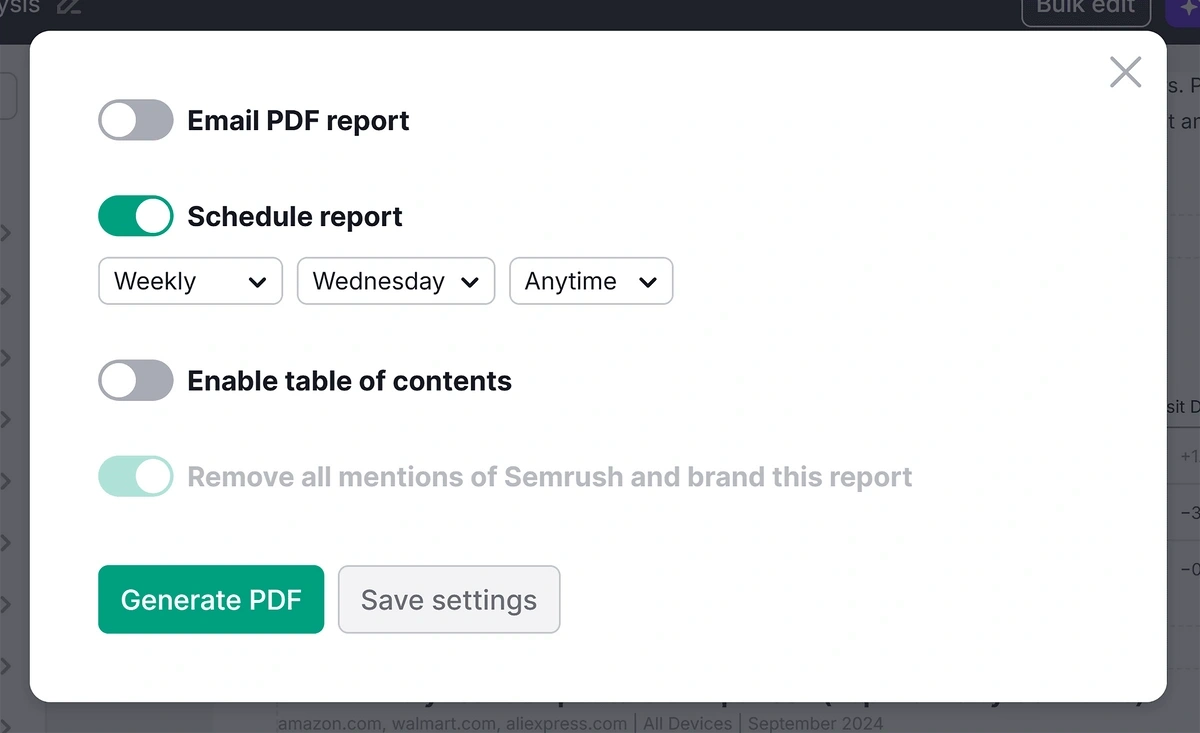
The Ultimate Guide to Performing a Competitive Analysis
Business success requires a thorough understanding of your competition. Which is where performing a competitive analysis can help.
This article will discuss everything that goes into doing a competitive analysis.
But let’s start with the basics.
What Is a Competitive Analysis & Why Is It Important?
A competitive analysis involves identifying all your brand’s competitors and analyzing their products (or services), sales, and marketing strategies. To uncover strengths and weaknesses, you can use to inform your own efforts.
More specifically, performing a competitive market analysis allows you to:
- Understand the market better: Analyze competitors’ websites and marketing campaigns to gain insight into customer preferences. And understand what kind of messaging resonates.
- Compare performance: Examine competitors’ pricing, product or service features, customer review ratings, and sales numbers (if available) to get benchmarks you can use to evaluate your performance
- Identify strategic differences and gaps: Find out how your competitors position themselves in the market. And use that information to improve your own strategies.
- Stay on top: Spot trends and changes in the market to adapt more quickly
How to Perform a Competitive Analysis
Follow these steps to perform a competitive analysis:
Step 1: Identify Market Competitors
Before you can analyze your competition, you need to identify competitors across your industry, local market, and organic and paid search results.
Here’s how to find each type:
Top Industry Competitors
Use a tool like Semrush Traffic & Market to identify competing businesses in your industry and learn more about the overall market.
Head over to the "Market Overview" tab, where you can generate a detailed report on your market.
Check out the “Market Summary” for a quick glance at your market size, the number of competitors, and more.
Use the “Growth Quadrant” section below to get a visual overview of the competitive landscape.
It will tell you more about:
- Established players: Websites with a steady flow of traffic
- Leaders: Websites that are getting a large amount of traffic and also growing at a fast pace
- Game changers: Websites with low traffic but high growth rates
- Niche players: Websites with low traffic and slow growth rates
Or, visit the “EyeOn” tab to monitor the companies that are competing in your market.
Whichever visualization you use, jot down all your main industry competitors.
Top Organic Search Competitors
Organic search competitors are companies your website is competing with in organic search results. They might not be selling products or services similar to yours, but they’re creating content aimed at your audience (or a part of it).
Use Semrush’s Organic Research tool to uncover organic search competitors.
Here’s how:
Enter your domain and click “Search.”
Once the tool generates a report, visit the “Competitors” tab.
Scroll down to the “Organic Competitors” table to see a list of websites you’re competing with in the search engine results pages (SERPs).
For each website on the list, you’ll see:
- How many keyword rankings you have in common with it
- The total number of keywords it ranks for
- The estimated amount of organic traffic it’s getting
Make note of the top competitors to include in your analysis.
Top Paid Search Competitors
You’ll also want to pay attention to your paid search competition. The brands using search engine marketing may be different from your organic search competitors.
Use Semrush’s Advertising Research to see all the websites you’re competing with in paid search.
Simply type in your domain and hit “Search.”
Next, visit the “Competitors” tab.
Here, you can see a list of all the websites you’re competing with in paid search. And you can scroll down to the table at the bottom to see them listed in a table.
List your top competitors from this area to use in your analysis later on.
Top Local SEO Competitors
If you’re running a local business, you’ll want to pay attention to rivals in your area. Because they can be your fiercest competition.
Identify all your local competitors using the Map Rank Tracker tool from Semrush.
Start by specifying the name and location of your business.
Find and select your business from the list.
Next, click on “Show keywords settings” to open the text box.
Type in the keywords you want to track. The tool will also suggest a few keywords to use.
You’ll see your business pinned on the map. And you can then set the grid size and distance.
Next, set how frequently you’d like the tool to gather ranking data.
Once you’re happy with the settings, click “Create campaign.”
The tool will then gather the data for your keywords. And generate a report.
You’ll be able to see the businesses you’re competing with in local search results.
Write down the top ones to use in your competitor analysis.
Step 2: Do Audience Research
Studying your target audience reveals key details about who they are and what they care about. Which is critical for determining your pricing, messaging, channels, and more.
Use Semrush’s Traffic Analytics tool to learn more about your target audience.
Here’s how:
Enter one or more competing domains you identified in the previous step and choose a location if you’re focused on a specific country or region. Then, click the “Analyze” button.
Navigate to the “Audience Overview” tab.
In the “Demographics” section, you’ll be able to see a breakdown of the audience by age, gender, and country.
If you scroll down, the “Socioeconomics” section will show you information about the audience’s household size, income level, employment status, and education.
Then, look into social media usage, devices, and interests in the “Behavior” section.
Jot down anything notable. And when you’re done with your analysis, you can revisit this information to inform your action plan.
Step 3: Create a Competitor Matrix and Gather Basic Company Information
Now, it’s time to create a competitor matrix that visually represents your competitive landscape. And contains all your competitors, along with information such as company size, market share, audience, and demographics.
Use Semrush’s Competitive Analysis Template to create a competitor matrix.
Then, add some of your top competitors. Depending on your goals, you may want to focus more heavily on a specific competitor category.
For example, if you’re looking to increase organic traffic by 15% in the next year, you’ll likely want to focus on your organic search competitors.
Then, complete the first section of the matrix (the “Company Profile” section).
Most of this information is easy to find, but here’s how to dig up a few key data points:
Number of Employees
Understanding how big your competitors are is a crucial piece of seeing how you stack up. And there are a few different platforms where you can find this information.
For example, check each company’s LinkedIn page to learn how many employees work there.
Or, look at their Crunchbase profiles.
Company Market Share
A company’s market share represents the percentage of revenue it generates out of the total amount of revenue the industry generates. And it clearly shows how dominant each company is.
You can learn more about a company’s revenue numbers using platforms like Crunchbase. Or even the company’s quarterly or annual reports—if those reports are public.
From there, use industry report data or platforms like Statista to get an estimate of the total revenue the industry generates. And divide each company’s revenue (including yours) by the total industry revenue to calculate that company’s respective market share.
Here’s the formula
Market share (%) = (company revenue / total industry revenue) x 100
For example, let’s say one competitor generated $10M in revenue last year. And the total industry revenue was $500M. This means the company’s revenue share would be 2%.
Step 4: Analyze Competitors' 4 Ps
A company’s marketing mix consists of product, price, place, and promotion—often called the four Ps. And they’re the key factors in marketing a product or service.
In this step, you’re going to analyze the four Ps for each of your competitors. And add the information to your copy of Semrush’s Competitive Analysis Template.
Here’s an overview of each:
Product
You’ll first want to learn as much as you can about your competitors’ products (or services). Including how they work and what customers think about them.
Here are a few things you can do to find this information:
- Check out their website. Start by reviewing each competitor’s website to learn more about their products or services. And pay special attention to all the features and benefits described.
- Try out the product or service yourself. Look for an opportunity to use the product or service yourself. Either purchase it or sign up for a free trial or account (in the case of software and similar non-tangible products).
- Read customer reviews. Find out what customers are saying about each competitor’s product or service. You can do this by reading through reviews on their websites and on independent review aggregators like Trustpilot.
Price
Find out how competitors are pricing their products or services. Depending on your industry and the nature of the offerings, the pricing may or may not be available.
But look for a pricing page on each competitor’s website. Or, request a quote from the sales teams.
Pay special attention to the pricing models they use and whether they differ from yours.
For example, do they rely on one-time purchases or subscription plans? Is their pricing on the lower or higher end compared to other companies in the industry?
Place
Find out where your competitors are selling their products or services. So you can see how closely you overlap.
Look into whether sales take place online, in retail stores, through select partners, or some combination.
If they sell products through retail stores, try to find out how many stores carry their products in stock. And if they sell through partners, look into who those partners are.
You’ll need to do some digging to uncover this information. Start with a competitor’s website—it’s most likely to have this information on a dedicated page.
Promotion
Next, find out how competitors are promoting their products or services.
Use Semrush’s Traffic & Market for this.
After the tool generates a report, scroll down to the “Market Players” section to see which marketing channels competitors are using and how much market share they have by channel.
Step 5: Study Competitors’ Marketing Activities
As a part of competitive analysis, you’ll want to identify the marketing activities your competitors use.
Here, we’ll show you how to analyze your competitors’ website content, social media marketing, email marketing, and paid search efforts.
Website Content
Learn more about your competitors’ content to see what types of pieces they publish on their sites and how often.
Here are a few things to check:
- Do they have an active blog?
- Do they publish downloadable assets like ebooks, reports, case studies, and white papers?
- Do they have a podcast or other multimedia content?
While not all website content is created with search engine optimization (SEO) in mind, much of it is. So, use Semrush’s Organic Research tool to learn which keywords competitors are ranking for.
This can also give you insight into their SEO strategies and provide you with ideas on what keywords you should be pursuing.
Here’s how to do an SEO competitor analysis:
Type in a competitor’s domain and click “Search.”
Next, visit the “Positions” tab.
Here, you’ll be able to see all the keywords that competitors rank for. Along with their position in the search results for each keyword and the traffic they’re generating from each search term.
You can also see the corresponding URL for each keyword ranking.
Next, filter the list by keyword position, search volume, keyword difficulty, or something else to find anything specific you’re interested in.
For example, you might want to use an advanced filter to omit branded terms (keywords that contain the brand’s name). Because they’re likely not relevant to you.
Check off all the website content types each competitor is using in your template copy. And jot down any key findings about keyword rankings.
Social Media Marketing
Examine your competitors’ social media channels to find out how they’re using social media to engage their audience.
Specifically, find out:
- Which social media platforms are they using?
- How frequently are they posting to their social media accounts?
- What kinds of posts are they publishing?
- How much engagement are their posts getting?
This will help you get a better understanding of their overall social media marketing strategies.
Email Marketing
Some (or all) of your competitors are likely using email marketing to engage their audiences and convert prospects into customers.
The easiest way to learn more about your competitors’ email marketing strategy is to simply sign up for their email list. And analyze the emails they send you.
A few things you should pay attention to:
- How frequently are they sending emails?
- What types of emails do they send (e.g., newsletters, promotional offers, etc.)?
- Are the emails triggered by user behavior (e.g., sent after a user abandons their shopping cart or visits a specific page)?
You can also use tools like MailCharts and SendView to track your competitors’ email campaigns and learn more about their email marketing strategies.
Paid Search
Finally, look into whether your competitors are using paid search ads. And consider:
- The keywords they’re bidding on
- The ads they’re using
- The landing pages they’re driving traffic to
Go back to Semrush’s Advertising Research tool, enter your domain, and head to the “Competitors” tab.
Scroll down to the “Paid Competitors” section to see how much traffic each competitor is getting from paid search, what they’re spending on paid ads, and more.
To find out which keywords a competitor is bidding on, click on their domain name.
On the next page, scroll down to the “Paid Search Positions” section. Here, you’ll see the exact keywords they’re bidding on and how much advertisers are paying for each click on average.
If you’d like to see the exact ads they’re using, visit the “Ads Copies” tab.
Here, review your competitors’ ads. And see how many keywords are triggering their ads.
The Advertising Research tool can also show you the landing pages the ads lead to. Simply visit the “Pages” tab.
You’ll be able to see a list of all their landing pages, along with traffic and keyword numbers. If you’d like, export this list by clicking the “Export” button.
Once again, be sure to make note of anything that stands out.
Step 6: Do a SWOT Analysis
You’re now ready to do a strengths, weaknesses, opportunities, and threats (SWOT) analysis for your own businesses and for competing businesses. And log the information in your copy of the competitor matrix template.
Here’s what to consider for each part of the SWOT analysis:
- Strengths: What is the business doing particularly well? What are some things that separate it from other competitors?
- Weaknesses: What are some things the business lacks? What are other competitors doing better?
- Opportunities: What could the business pursue based on its strengths and the state of the market? For example, could it develop a new product targeting an underserved segment of the market? Could it invest in a specific marketing channel it’s currently underutilizing?
- Threats: What are some things that could threaten the business? Among other things, these can include upcoming changes in state laws or regulations, negative media coverage, or a poorly received product launch.
Step 7: Analyze the Data & Plan Next Steps
Now that you have all this data on your competition, it’s time to put it into action.
Review the completed matrix and all your notes about your target audience. And brainstorm some ideas for how you could outperform the competition.
This might involve:
- Revising your messaging
- Optimizing your pricing strategy
- Increasing your investment in underused marketing channels
- Focus on underserved market segments
For example, you might notice that a competitor is getting a lot of engagement on social media channels you’re not using. And your audience research shows that the audience spends most of their time on those platforms.
If that’s the case, you should take a more in-depth look at the competitor’s social media strategy to see what they’re doing. And determine how you can replicate it in an even better way.
Whatever opportunities you decide to pursue, make sure to create an action plan with concrete steps, assignees, and due dates.
Step 8: Automate Competitor Analysis Reporting
Evaluating your competitors should be an ongoing process. So you can stay on top of important changes.
Use Semrush’s My Reports feature to automatically create a competitor analysis report every month.
Simply find and click on the “Monthly Competitor Analysis” report template in the “Ready-to-use templates” section.
On the next screen, enter your competitors’ domains and click the “Create report” button.
The tool will then display a report template.
Customize it by using the widget options located in the left-hand menu.
Once you’re happy with the report, click the “Generate PDF report” button located in the top right corner of the screen.
Then, toggle the “Email report” option and add the email address you’d like the report to be sent to.
Or, use the “Schedule report” option to schedule the report to be delivered automatically on a daily, weekly, or monthly basis.
Once it’s set up, you’ll automatically receive the competitor analysis report in your email inbox at your chosen interval.
Keep Analyzing Your Competitors
Ideally, you should perform a full competitive analysis every quarter. To stay on top of the competitive landscape and have the best chance of succeeding in the market.
Take advantage of Semrush’s extensive suite of tools to uncover competitors and analyze their performance:
- Traffic & Market: Learn more about a competitor’s traffic data and target audience
- Organic Research: Uncover organic search competitors and find out which keywords they rank for
- Advertising Research: Analyze your competitors’ paid search campaigns, see which keywords they’re bidding on, and review their ads and landing pages
- Map Rank Tracker: Identify businesses you’re competing with in local search results
- My Reports: Automate competitor analysis reporting
Then, use Semrush’s Competitive Analysis Template to get started.
Stop Guessing, Start Growing 🚀
Use real-time topic data to create content that resonates and brings results.
Exploding Topics is owned by Semrush. Our mission is to provide accurate data and expert insights on emerging trends. Unless otherwise noted, this page’s content was written by either an employee or a paid contractor of Semrush Inc.
Share
Newsletter Signup
By clicking “Subscribe” you agree to Semrush Privacy Policy and consent to Semrush using your contact data for newsletter purposes
Written By


Josh is the Co-Founder and CTO of Exploding Topics. Josh has led Exploding Topics product development from the first line of co... Read more

